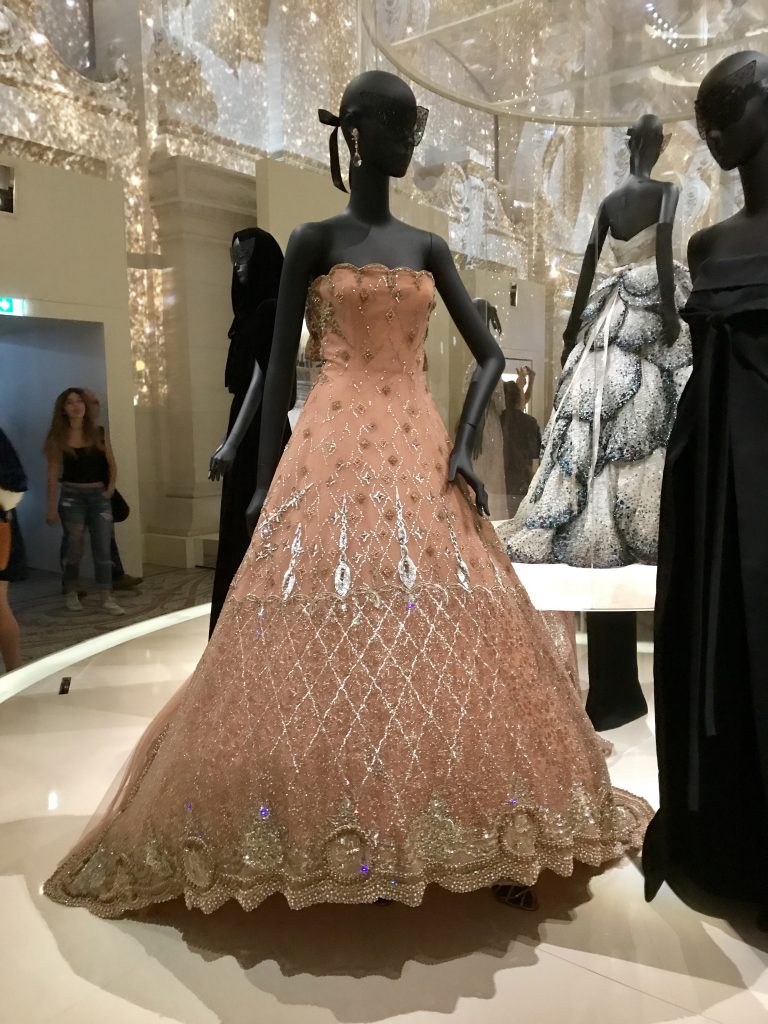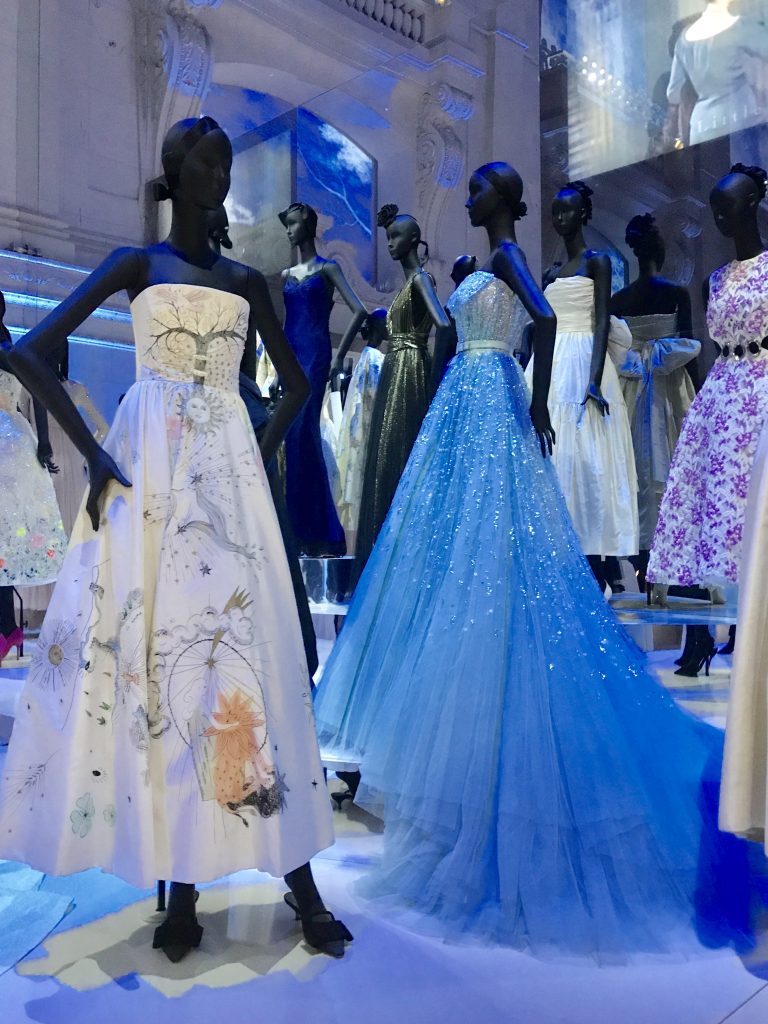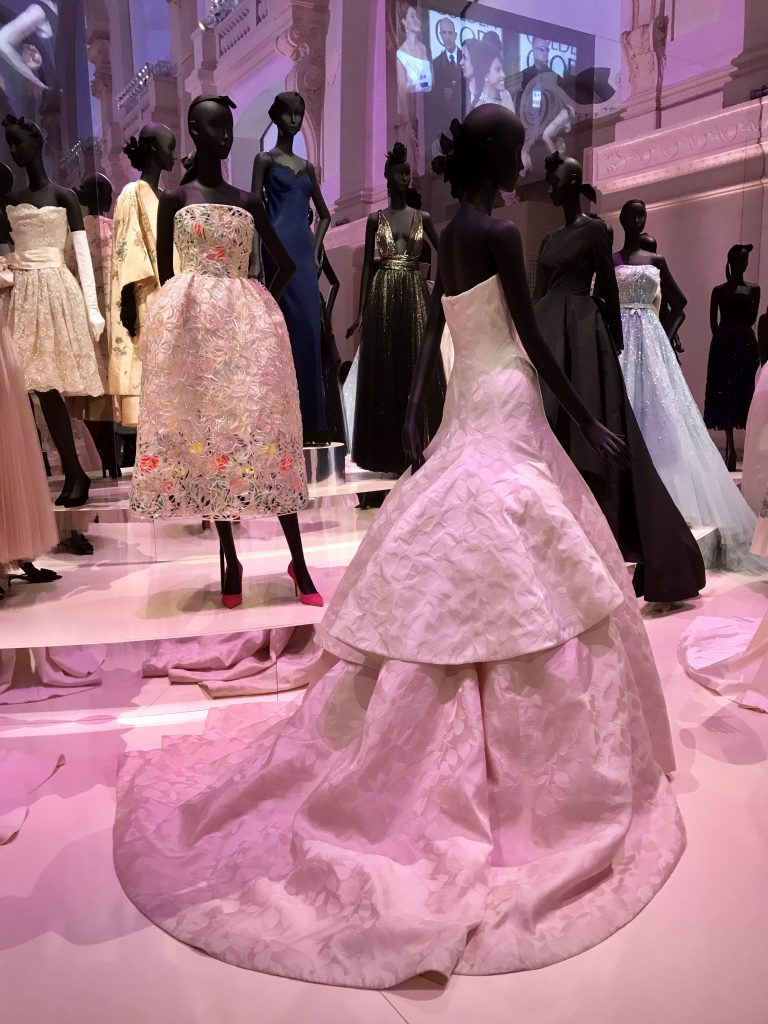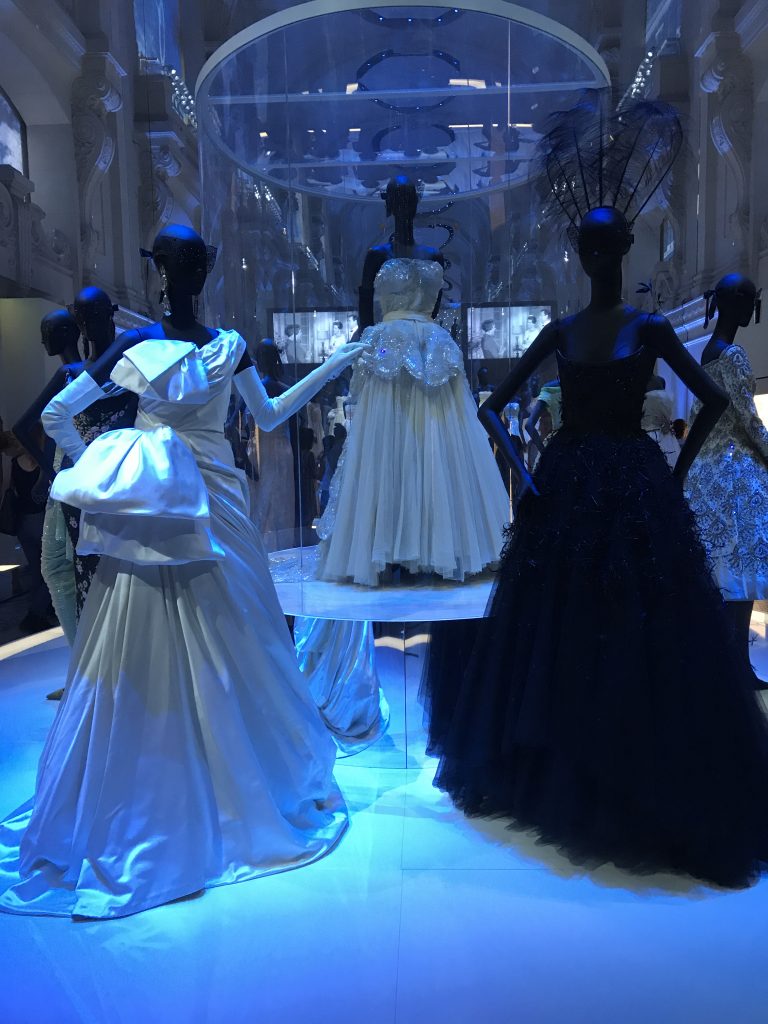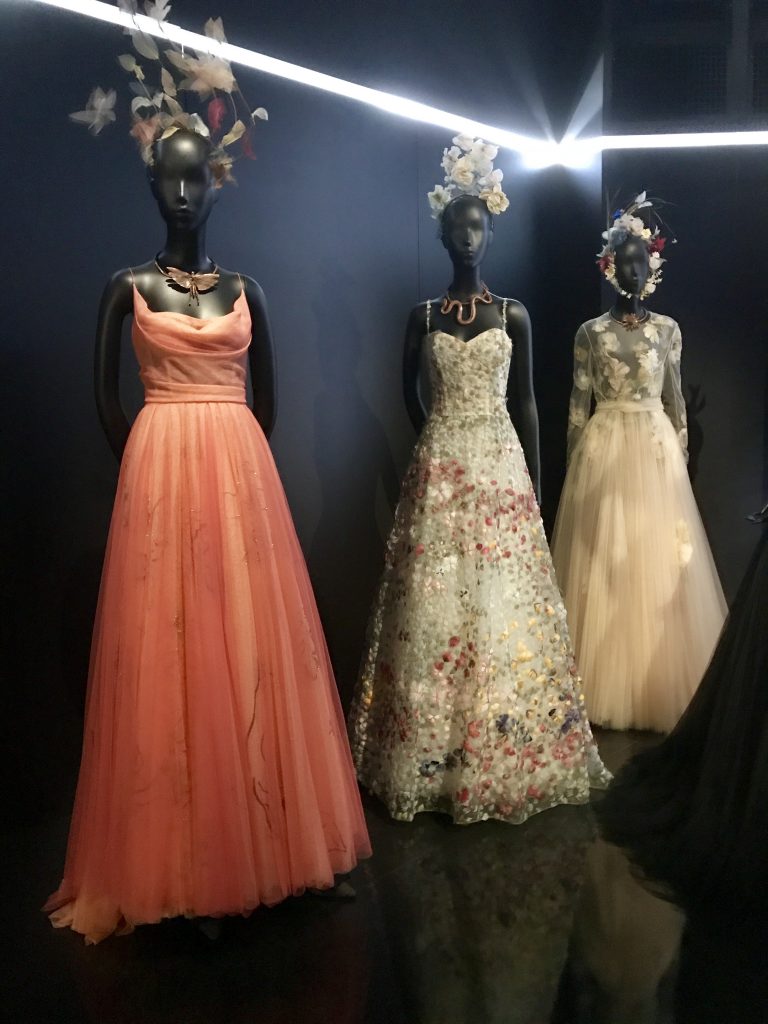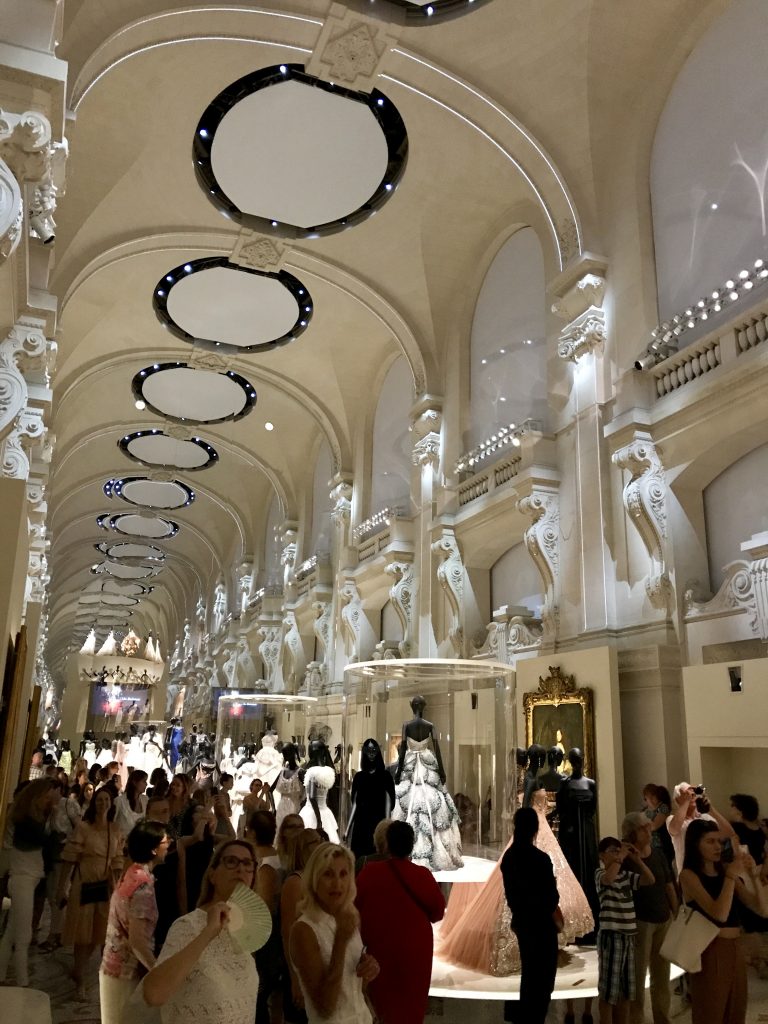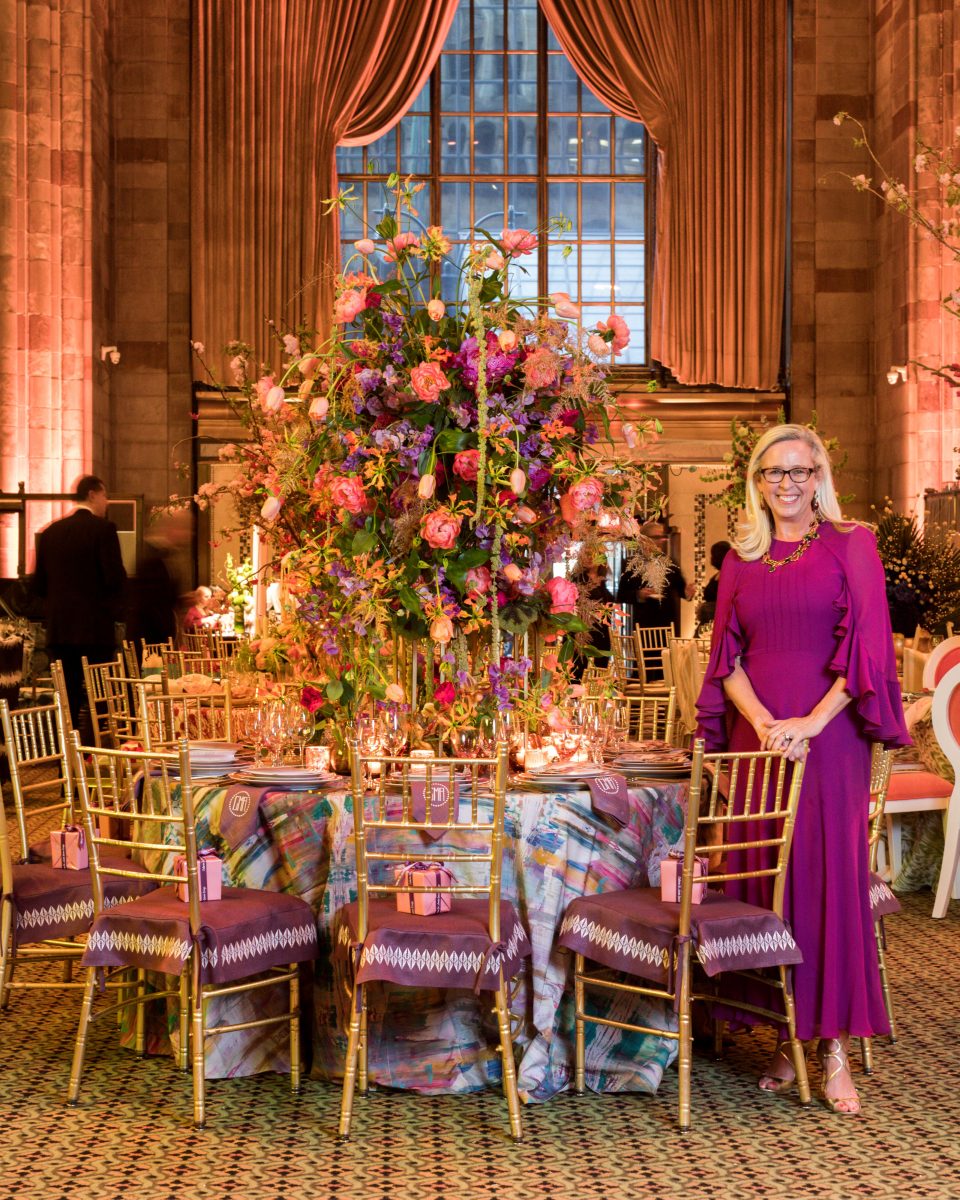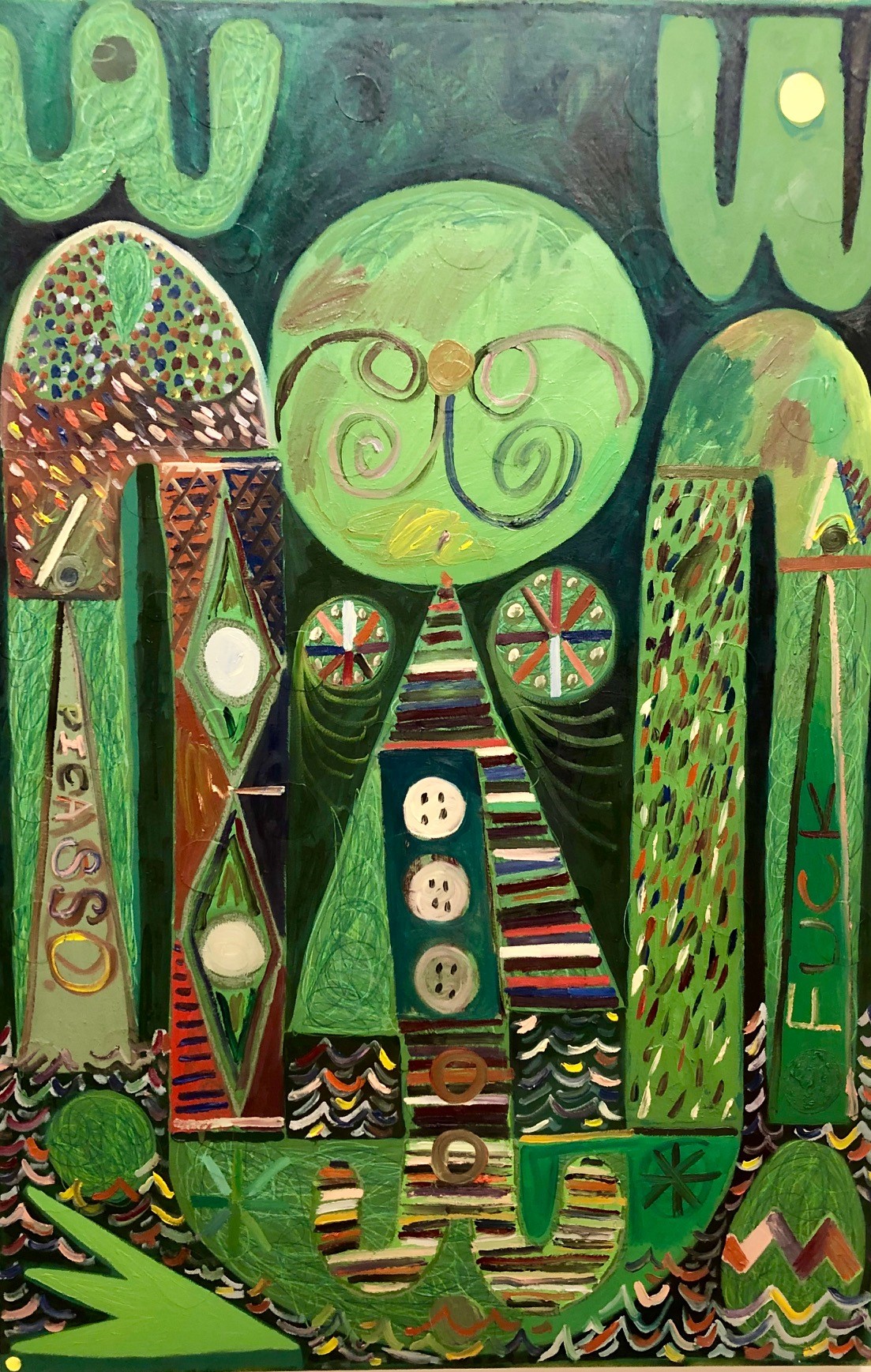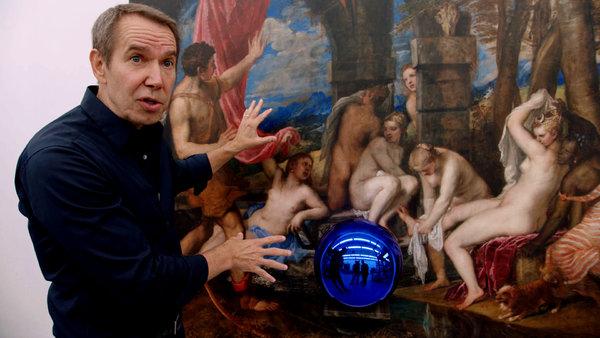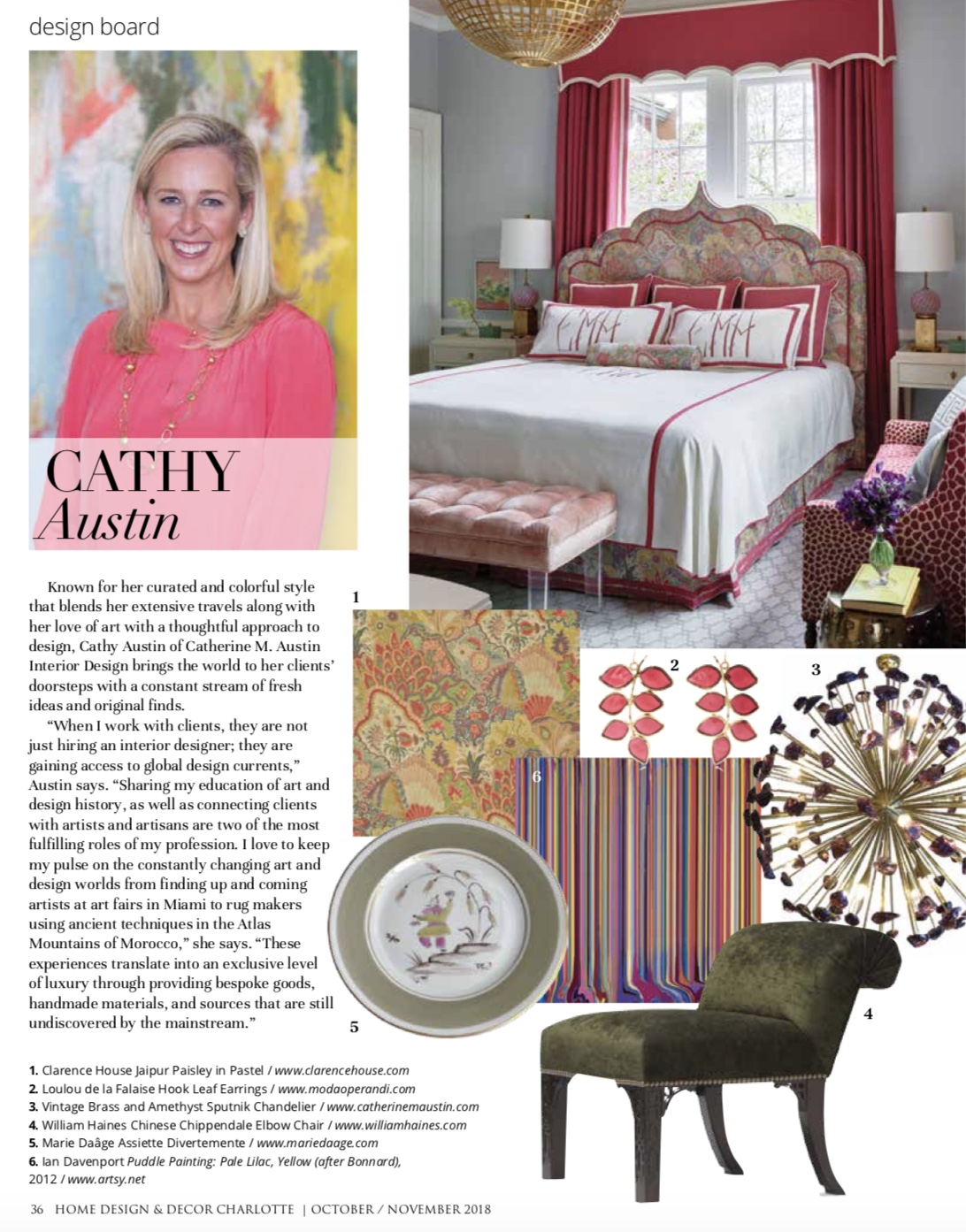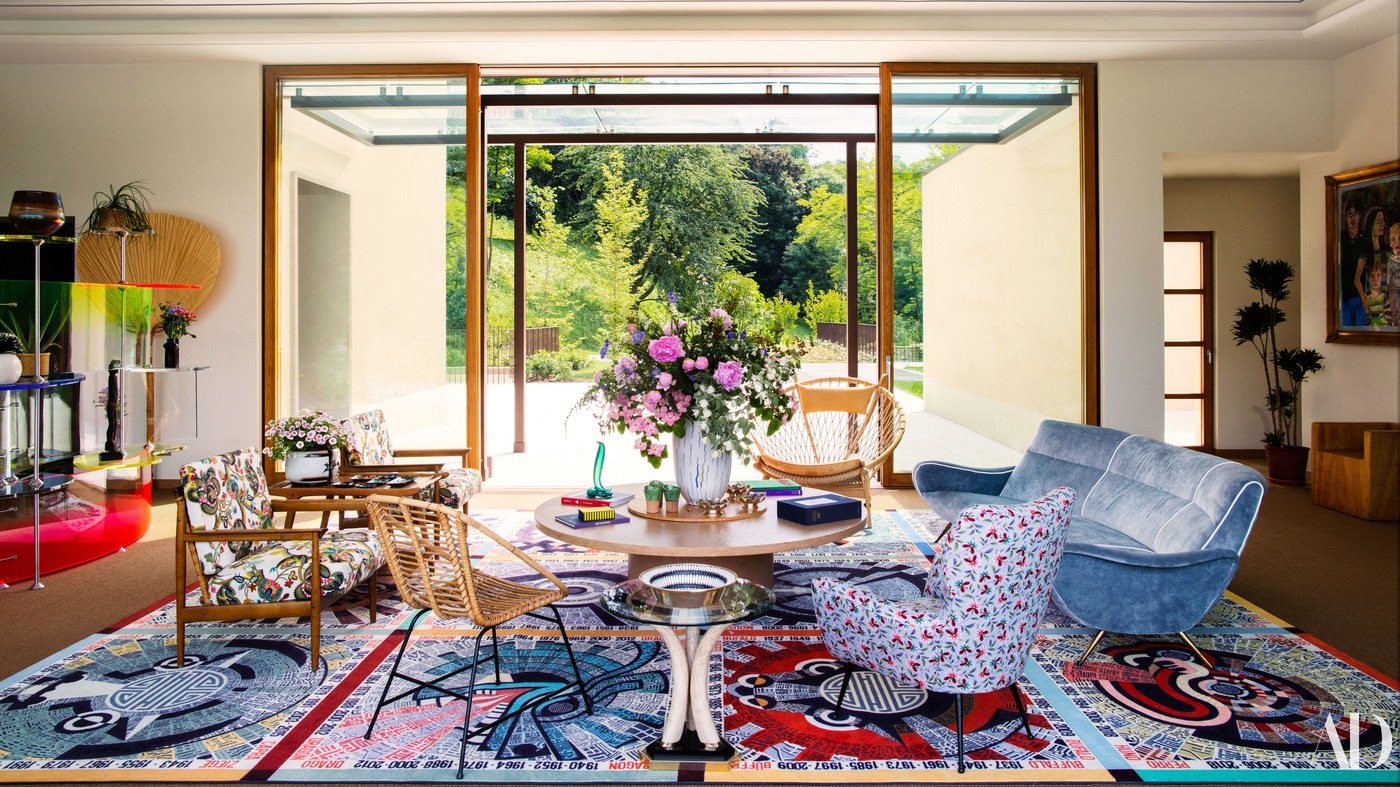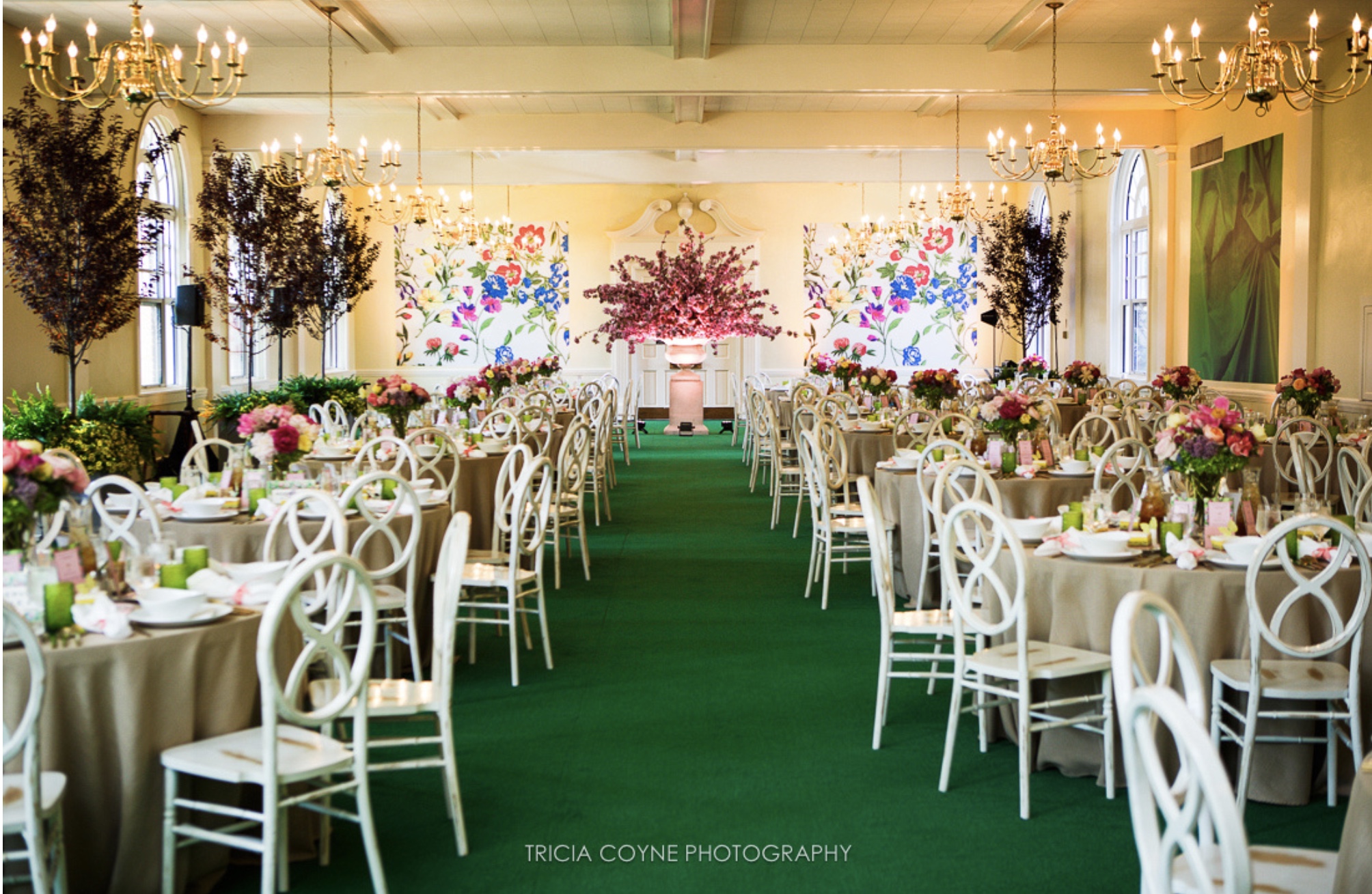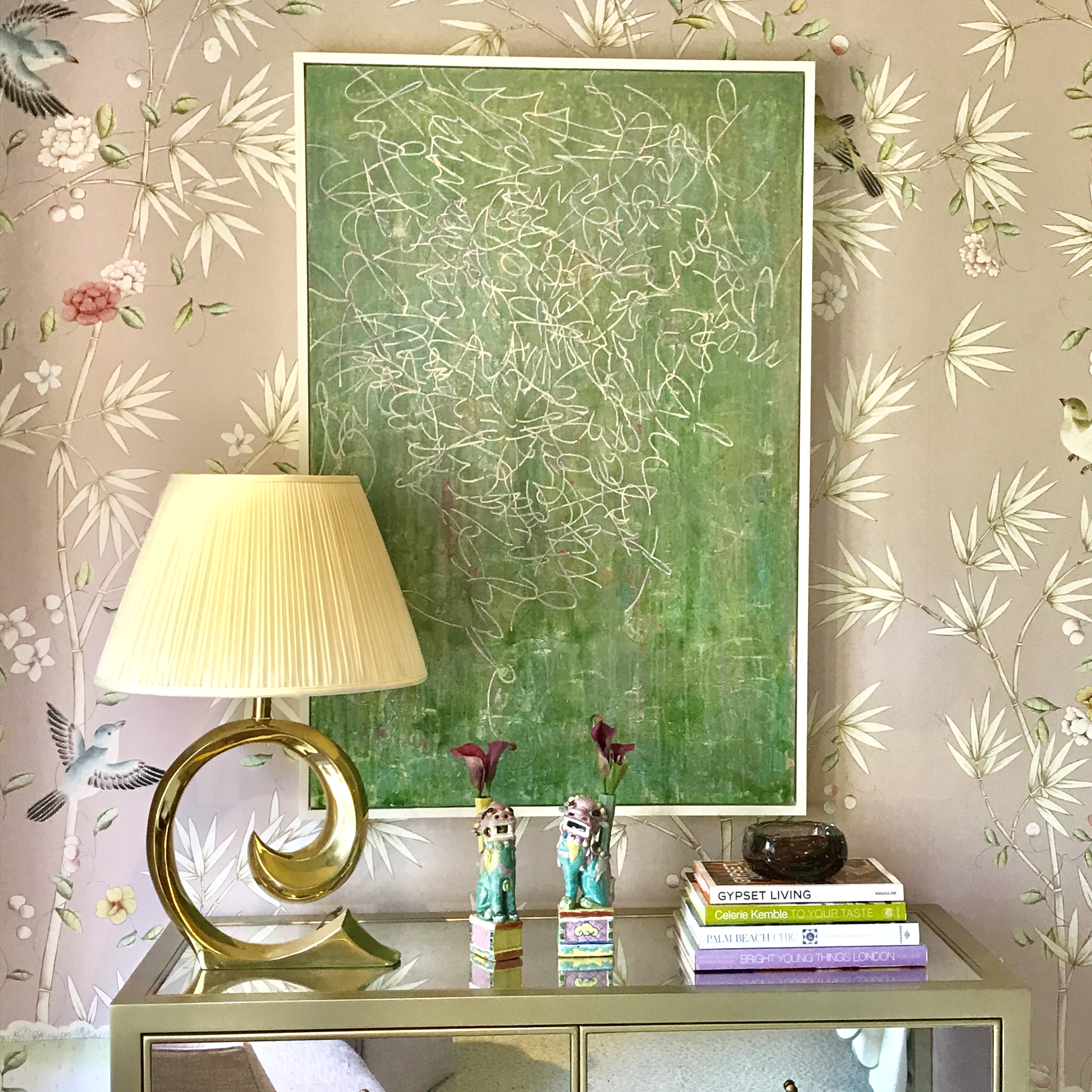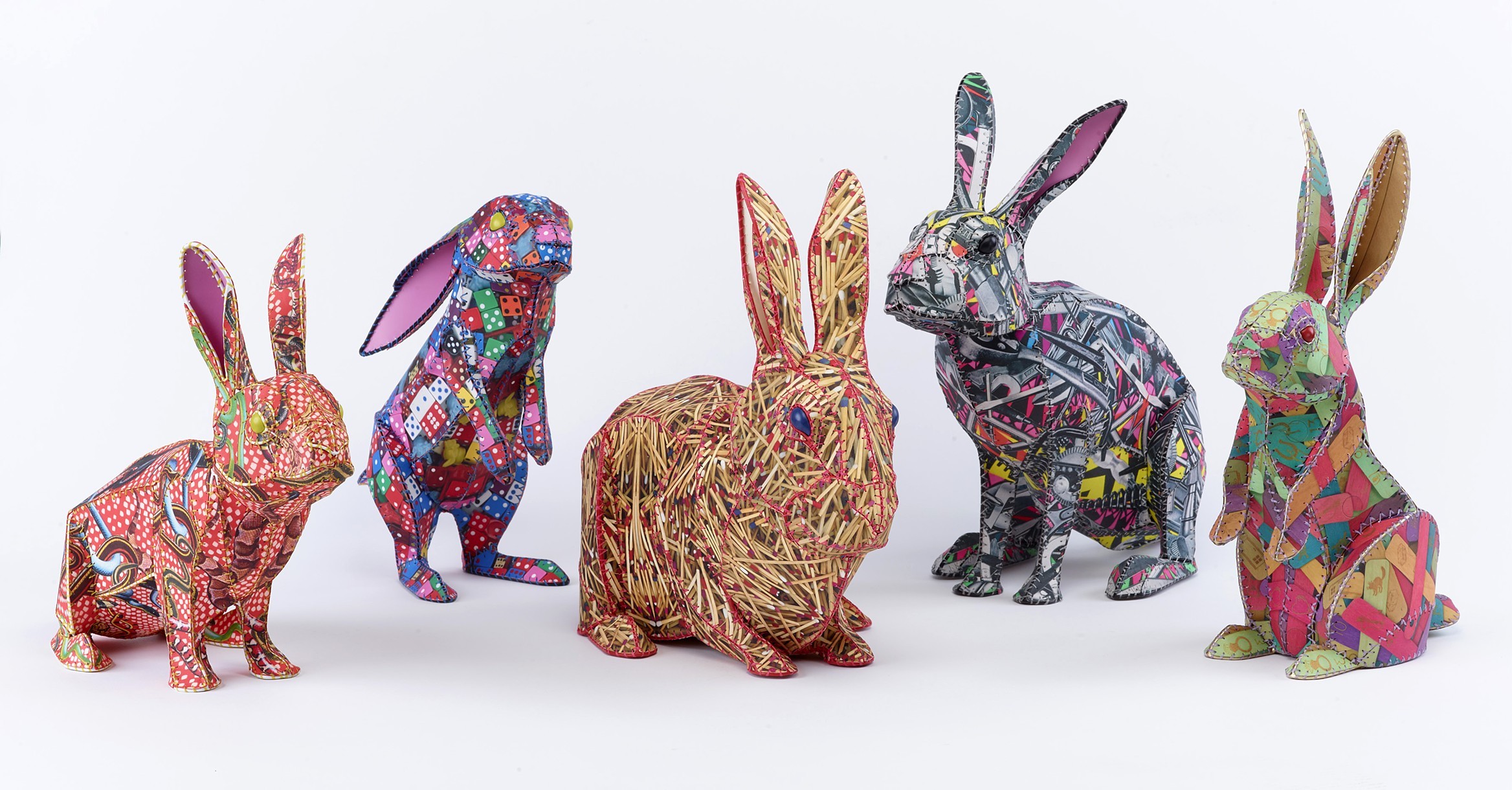“Haute couture dresses have the unique and unexpected quality of a work of art. They are among the last things to be made by hand, by the human hand whose value is irreplaceable, for it gives everything it makes what no machine can bring: poetry and life.”-Christian Dior
We have just returned from an incredibly inspiring trip abroad and one of the highlights was “Christian Dior: Couturier du Reve” at the Musée des Arts Décoratifs. The brilliant retrospective celebrates the 70th anniversary of the creation of the House of Dior, I have always been intrigued by the intersection where fashion, art and design collide. What I admired most about Mr. Dior is that he was truly a student of the world. His love of travel and art is reflected in his 70 years of designs. These works highlight Dior’s perspective by showing the connections he created between couture and all forms of art. The exhibition shows that his gowns were full of references to painting and sculpture as well as everything that makes up the art of living: wallpapers, fabrics, china and chinoiserie.
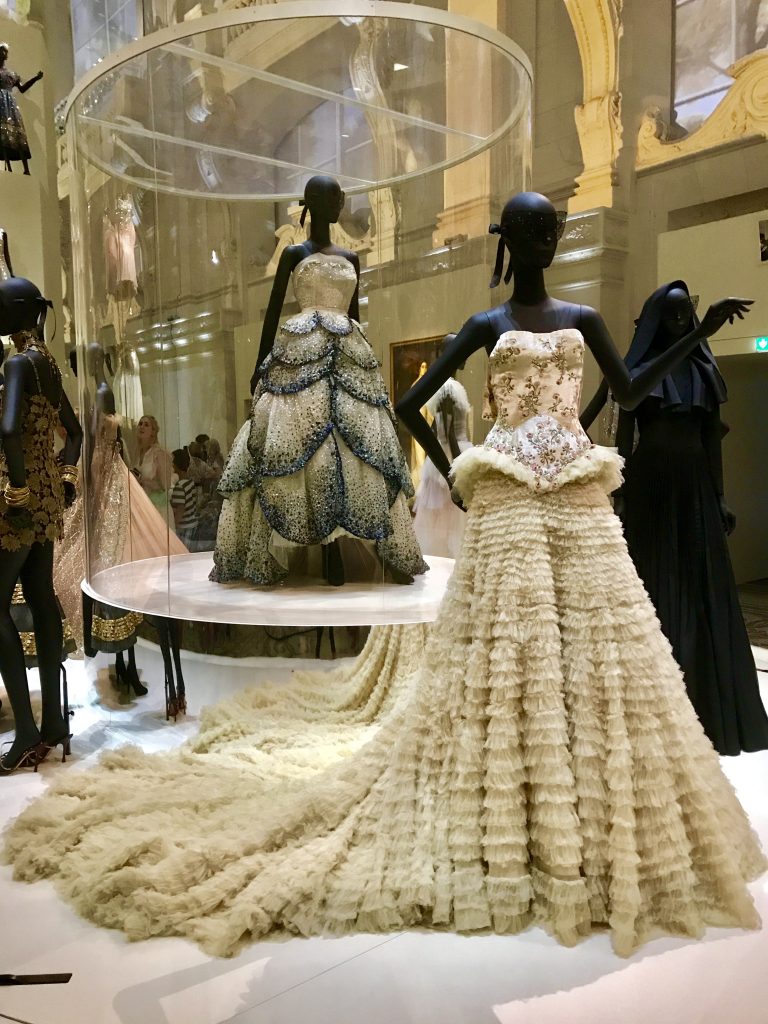
The lavish exhibition invites visitors on a voyage of discovery through the universe of the House of Dior’s founder and the illustrious couturiers who succeeded him: Yves Saint Laurent, Marc Bohan, Gianfranco Ferré, John Galliano, Raf Simons and, Maria Grazia Chiuri. The selection of over 300 haute couture gowns designed between 1947 and the present day has a unifying thread of emotions, life stories, affinities, inspirations, creations and legacies. Alongside the dresses is the most wide-ranging display to date of atelier toiles and fashion photographs, as well as hundreds of documents, including illustrations, sketches, documentary photographs, letters and notes and advertising documents, and fashion accessories, including hats, jewelry, bags, shoes and perfume bottles. Reflecting the fact that Christian Dior was also a knowledgeable art lover who adored museums, designs from over 70 years interact with a selection of paintings, furniture and objets d’art. These works highlight and develop Christian Dior’s outlook by exploring the ties he forged between couture and all forms of art, defining the House of Dior’s enduring influence. The two curators, Florence Müller and Olivier Gabet, convey their message with a chronological and themed exhibition design that inhabits and brings together the museum’s fashion areas and the nave for the first time.
The exhibition opens with the story of Christian Dior’s life: his childhood in Granville, the Roaring Twenties when he discovered the avant-garde art world and the pleasures of Parisian entertainment, his training as a fashion illustrator and his entry into the haute couture world. Before turning to fashion, Christian Dior ran an art gallery from 1928 to 1934 in partnership with his friends, first Jacques Bonjean then Pierre Colle. This part of his life is illustrated with a series of paintings, sculptures and documents that depict an eclectic approach to curating, the older generation of established artists rubbing shoulders with young artists who were Dior’s peers. These up-and-coming talents included Giacometti, Dalí, Calder, Leonor Fini, Max Jacob, Jean Cocteau and Christian Bérard. Christian Dior was a lover of antiques and objets d’art, an Art Nouveau collector, a decorator enthralled by the 18th century and a garden enthusiast. He drew on all these sources of inspiration to embellish his private residences and define the aesthetic for his couture house and designs.
All these creative themes, revisited by his successors so that they have become an integral part of the Dior spirit, are revealed one by one: art and photography, a profusion of colours and textures, austere Parisian elegance, references to the neoclassical decorative style, the joys of exoticism, a fascination for floral motifs, and so on. Nathalie Crinière presents the themes in successive settings that suggest an art gallery, an atelier, a street, a boudoir, journeys, and a fabulous garden. Throughout the exhibition, paintings, sculptures and decorative objets d’art illustrate the couturier’s tastes and sources of inspiration as well as a creative sensibility shared by all the artistic directors who have followed in his footsteps.
PHOTOGRAPHY
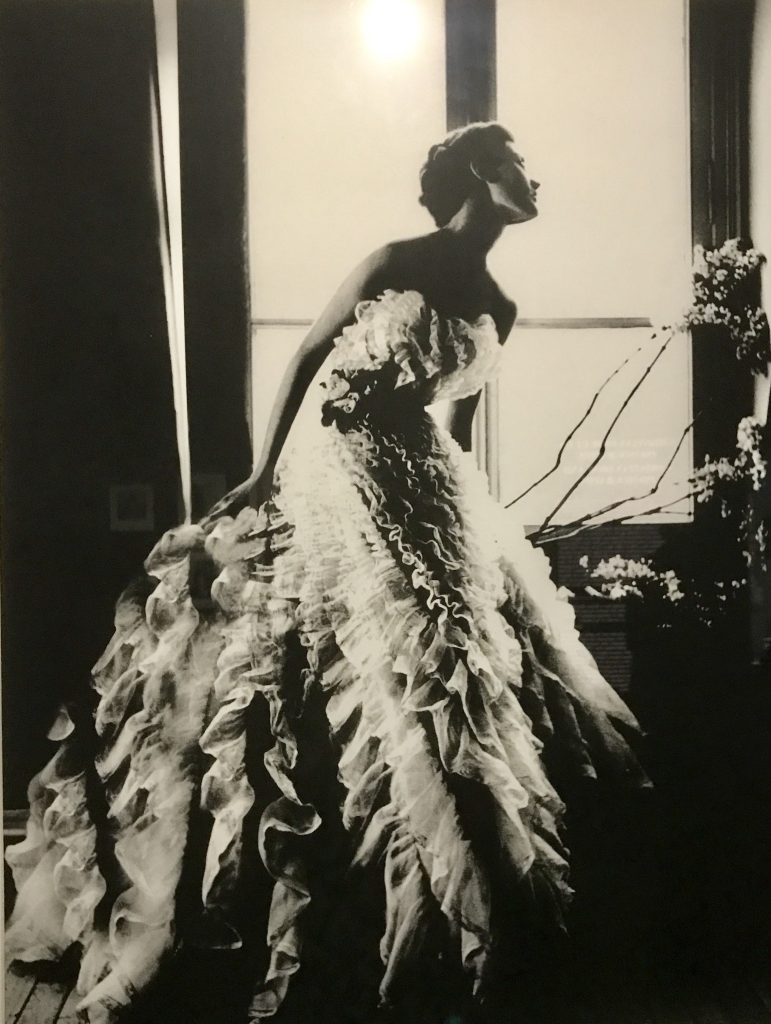
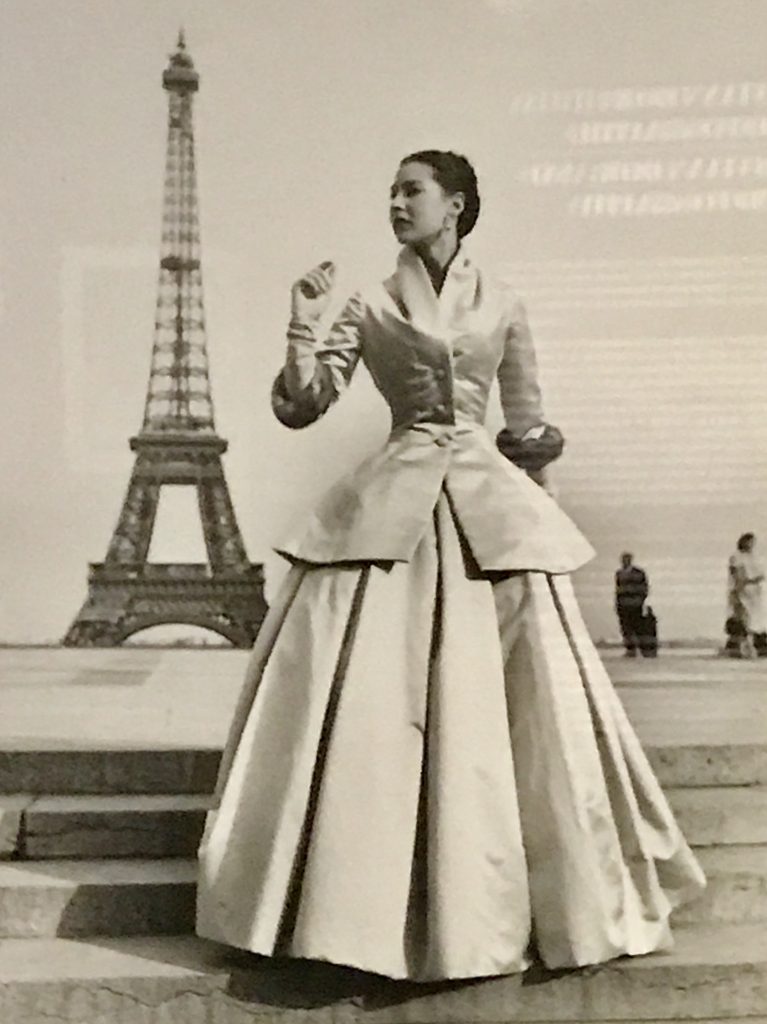
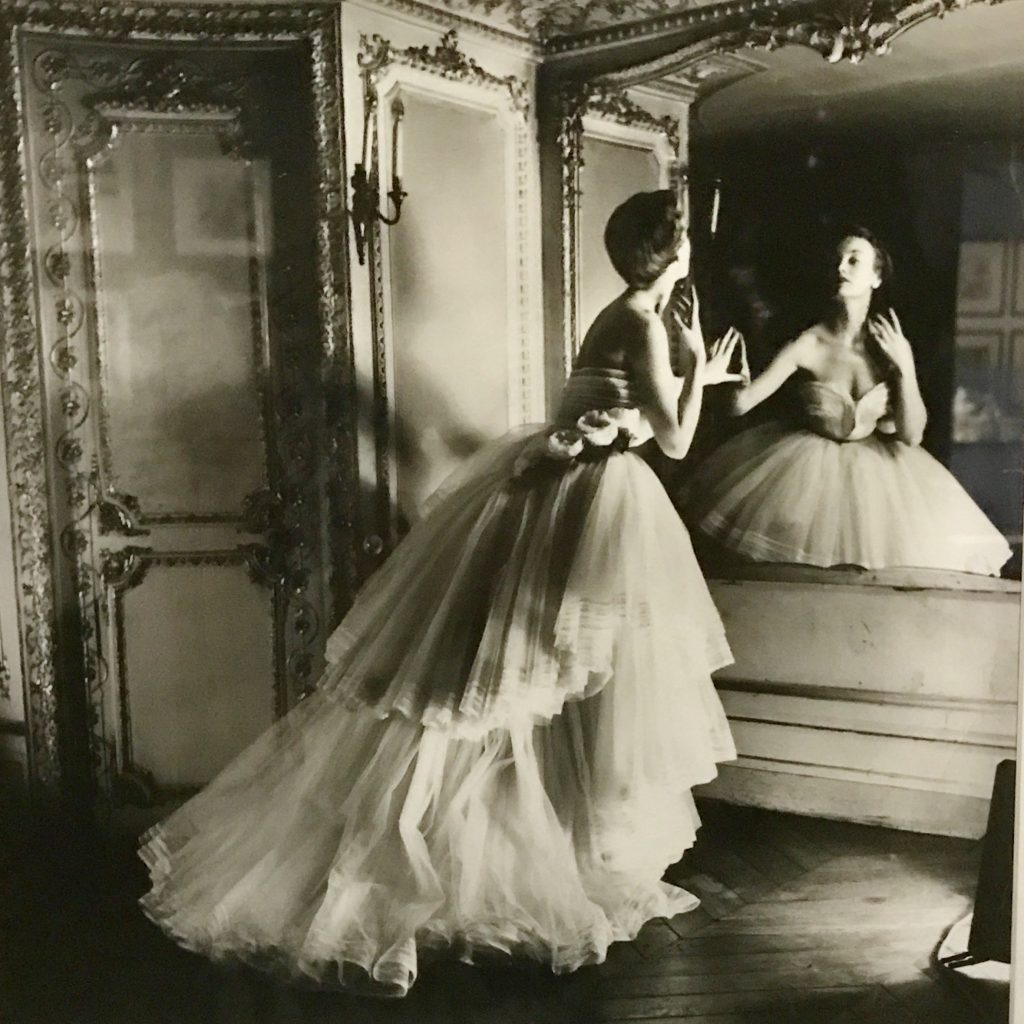
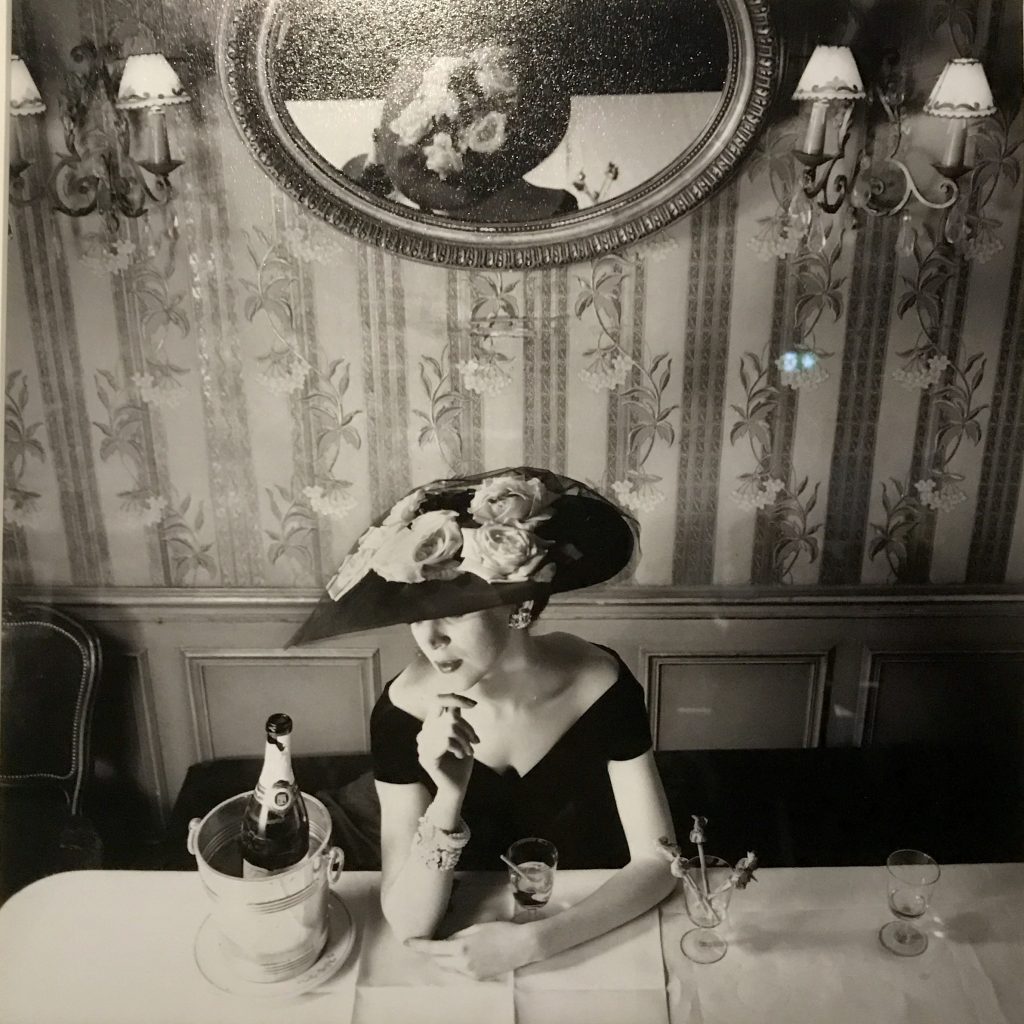
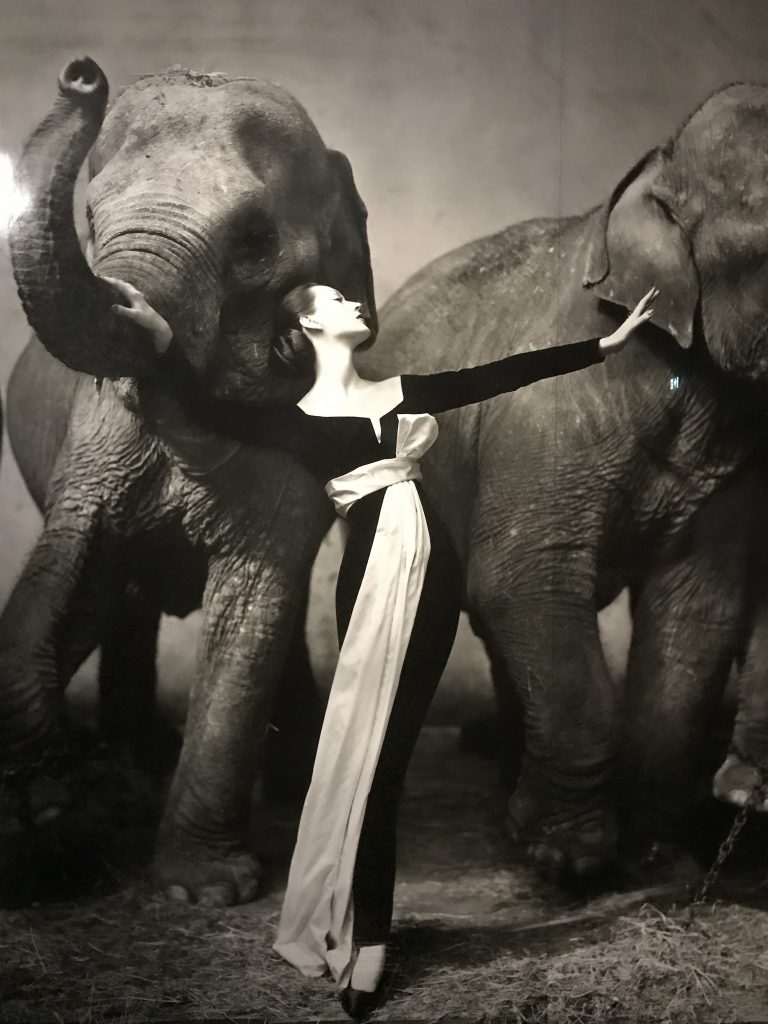
COLOURAMA
“A touch of colour can be enough to change your appearance: a brilliant emerald scarf, a bright red dress, a vibrant yellow stole, royal blue gloves…” -Christian Dior
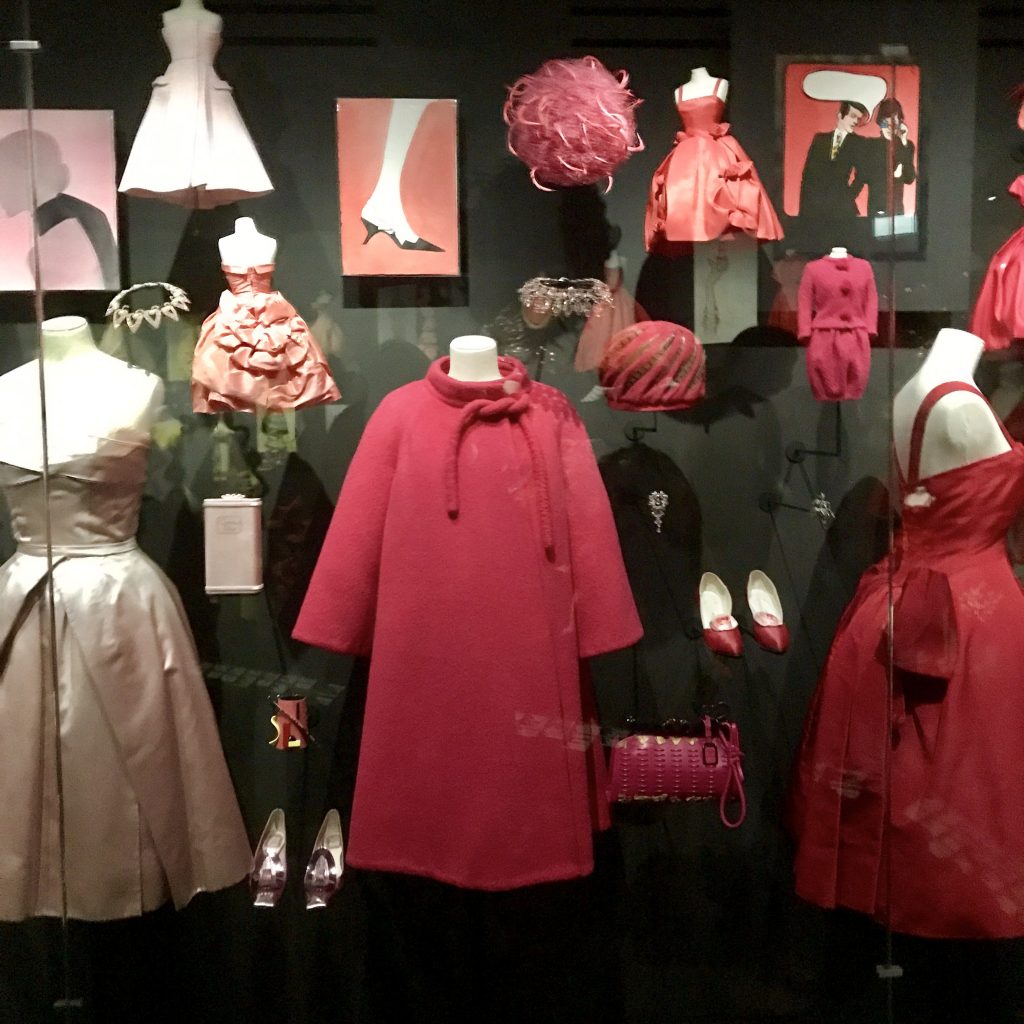
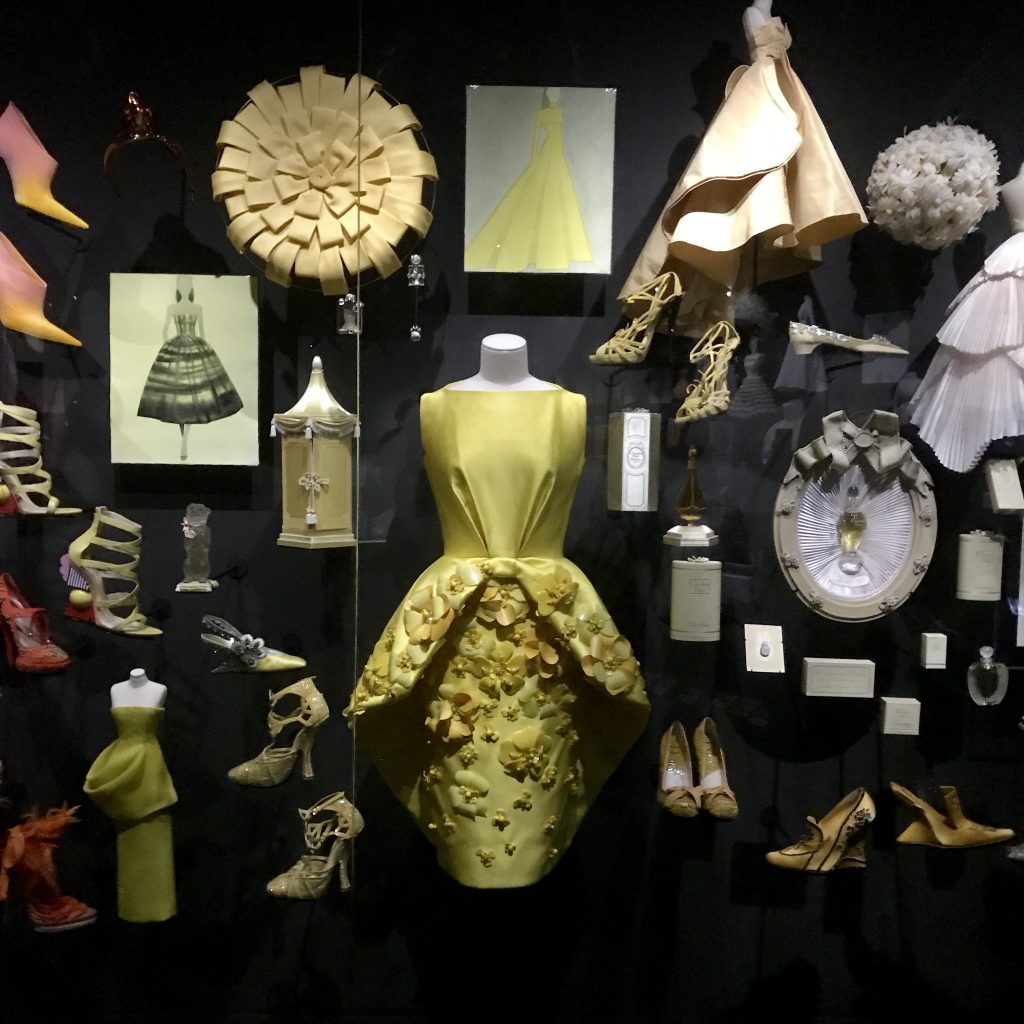
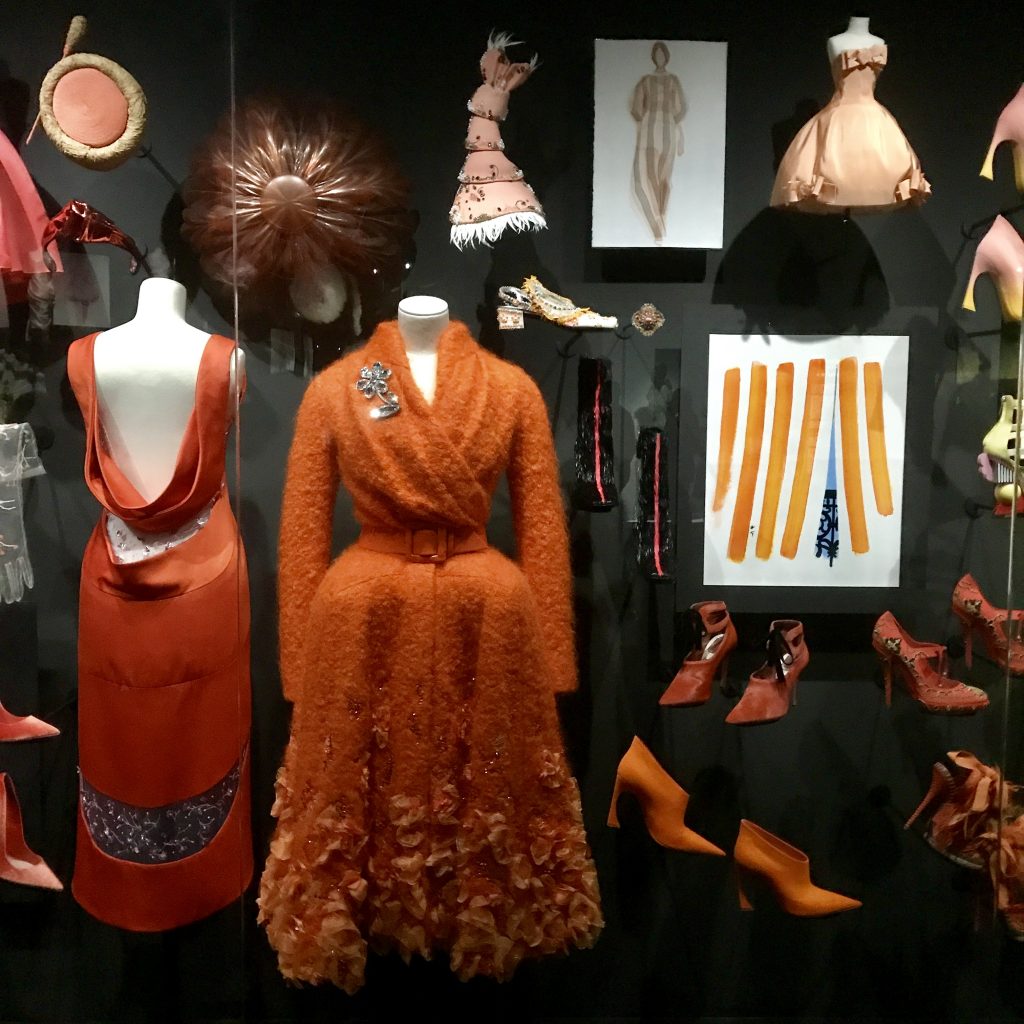
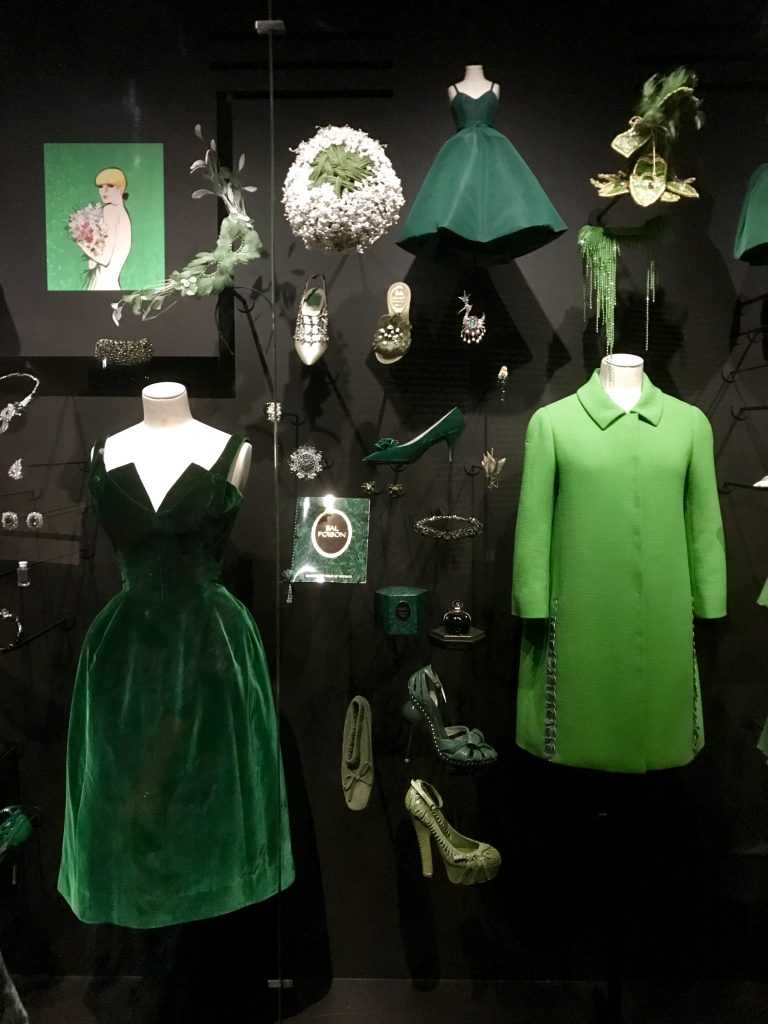
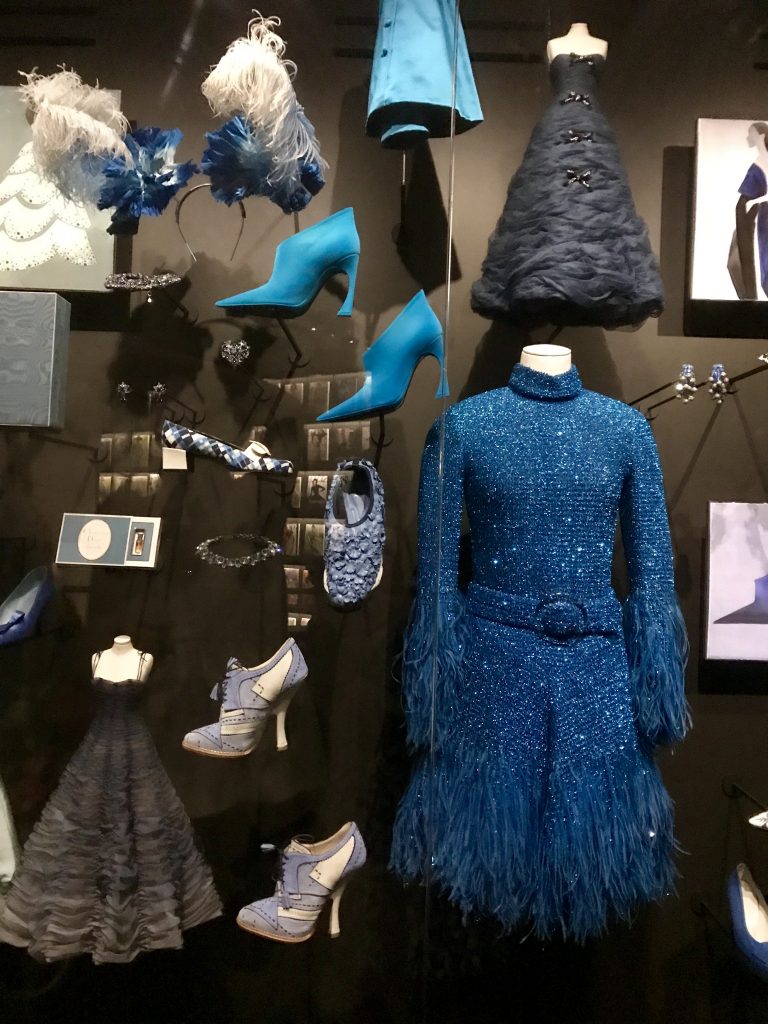
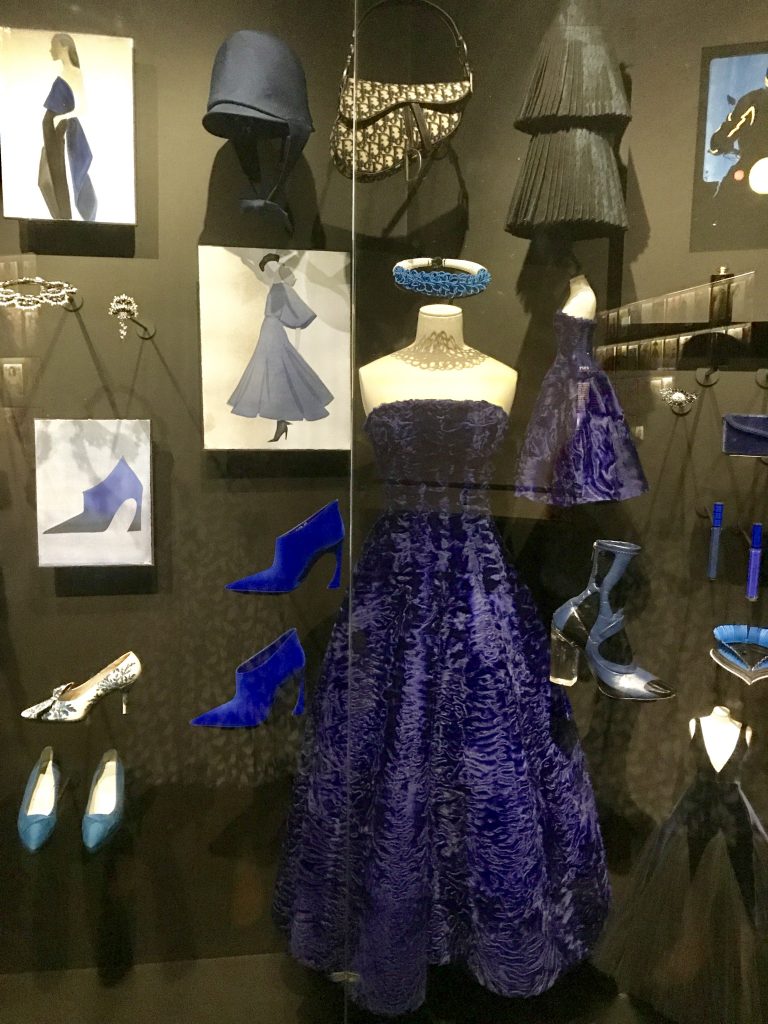
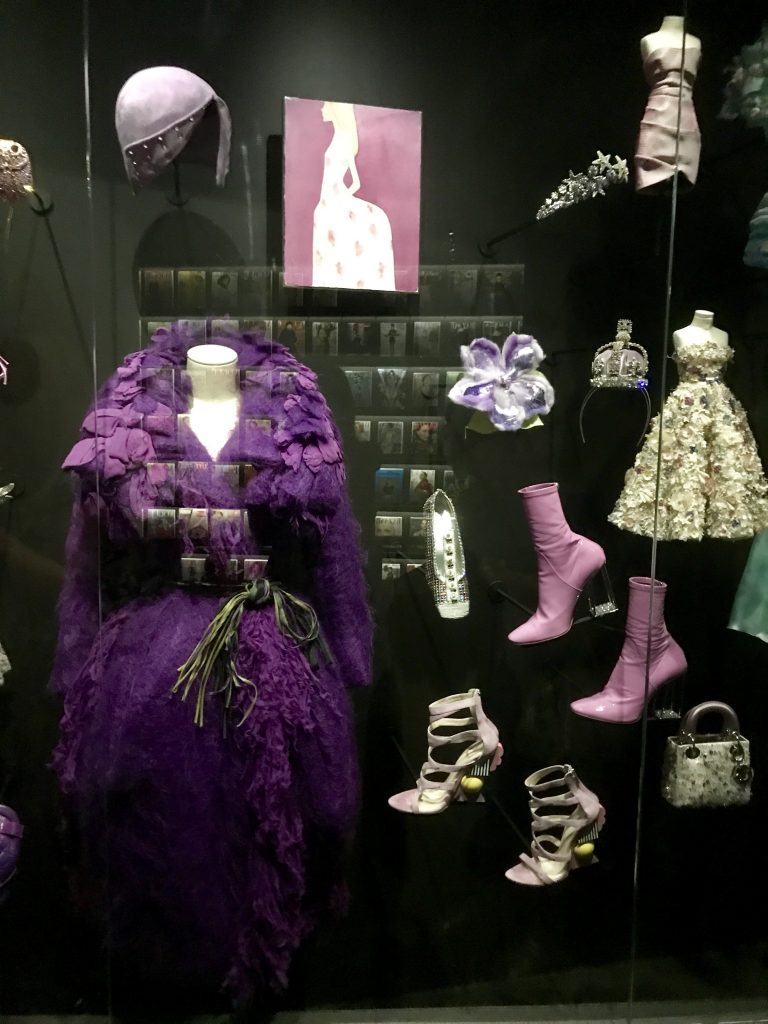
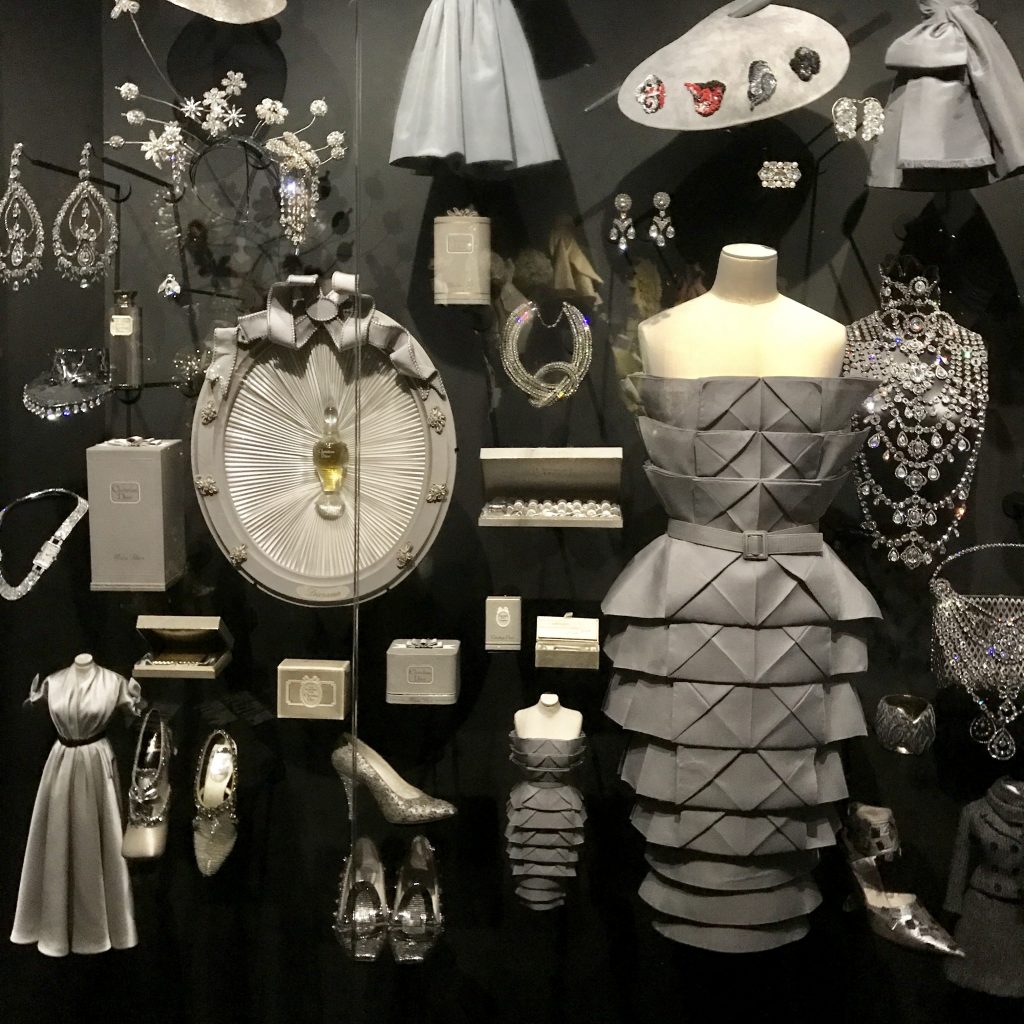
DIOR GARDENS
A leading figure in the world of 20th-century fashion once he launched his New Look spring/summer collection in 1947, Christian Dior took the feminine shape in a totally new direction, relegating the masculine silhouette of the war years to the past. His dresses expressed a modern femininity, incarnated by his flower woman and producing a shape characterised by flowing curves and the bearing of a classical ballet dancer. The New Look featured soft shoulders, accentuated busts, nipped-in waists and hips amplified by swirling corolla-like skirts. Christian Dior relaunched the textile industry with his insistence on the use of great swaths of fabric, a controversial move after the years of shortage under the Occupation. He succeeded in breathing new life into the couture tradition, giving a central role to embroiderers and craftspeople making costume jewellery and accessories. He invented an internationally-focused couture that put Paris back in the spotlight as the capital of fashion.
The scent of childhood is the loveliest scent of all. For Christian Dior, this scent was rooted in the Granville family garden, perched on the cliffs of the Normandy coast, overlooking the Channel and scoured by the wind. This bucolic oasis created by his mother Madeleine gave Christian Dior a taste of paradise and a love of flowers that stayed with him throughout his life. The young boy would pour over the Vilmorin-Andrieux gardening catalogues that taught him everything about the flora he wished to tame. When destiny led him to the world of Haute Couture, he did not forget the scent of his childhood flowers, incorporating them into his collections. And they brought him success, in the form of the New Look and its flower-woman with her full corolla-shaped skirt and narrow calyx-like bodice. The Dior style was beautifully defined by flowers, his dresses scattered with individual blooms or bouquets, embroidered with meadow flowers or draped in the shape of a rose, like the Opéra Bouffe gown.
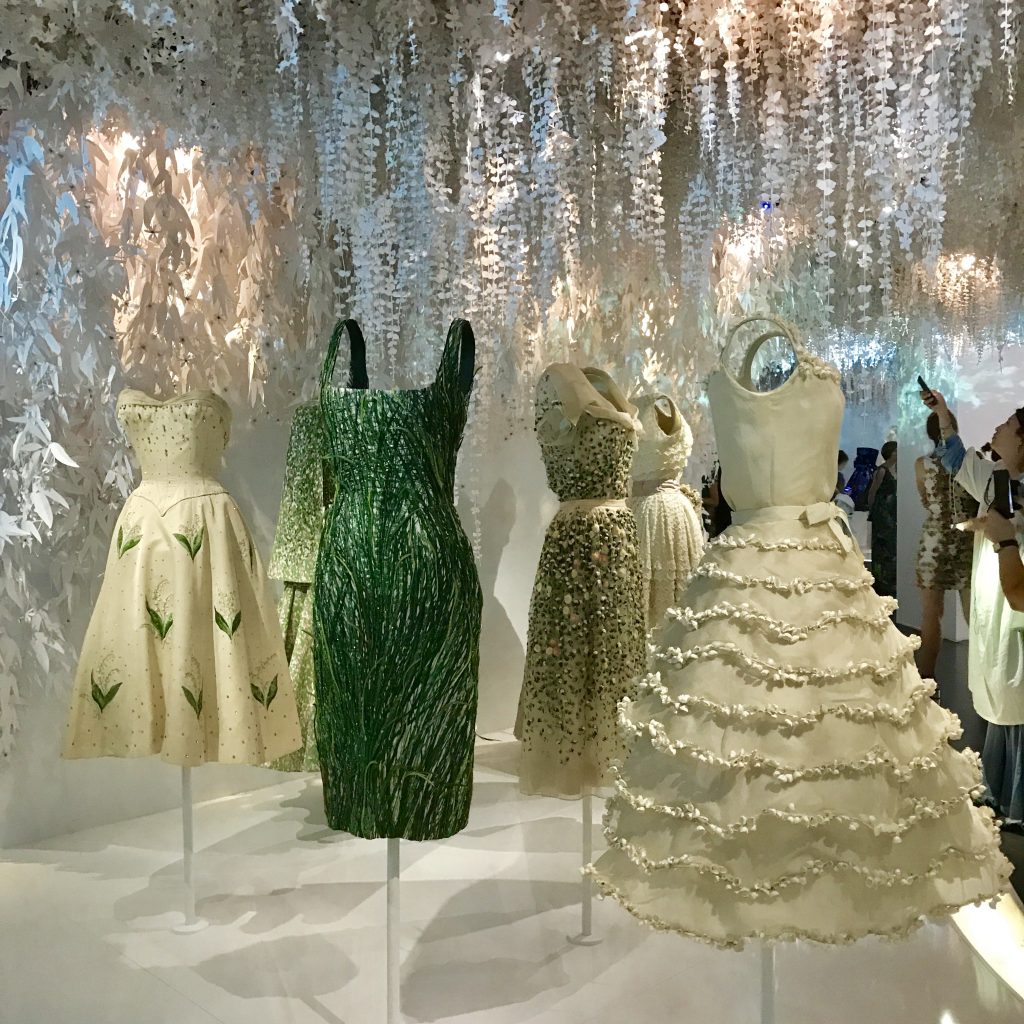
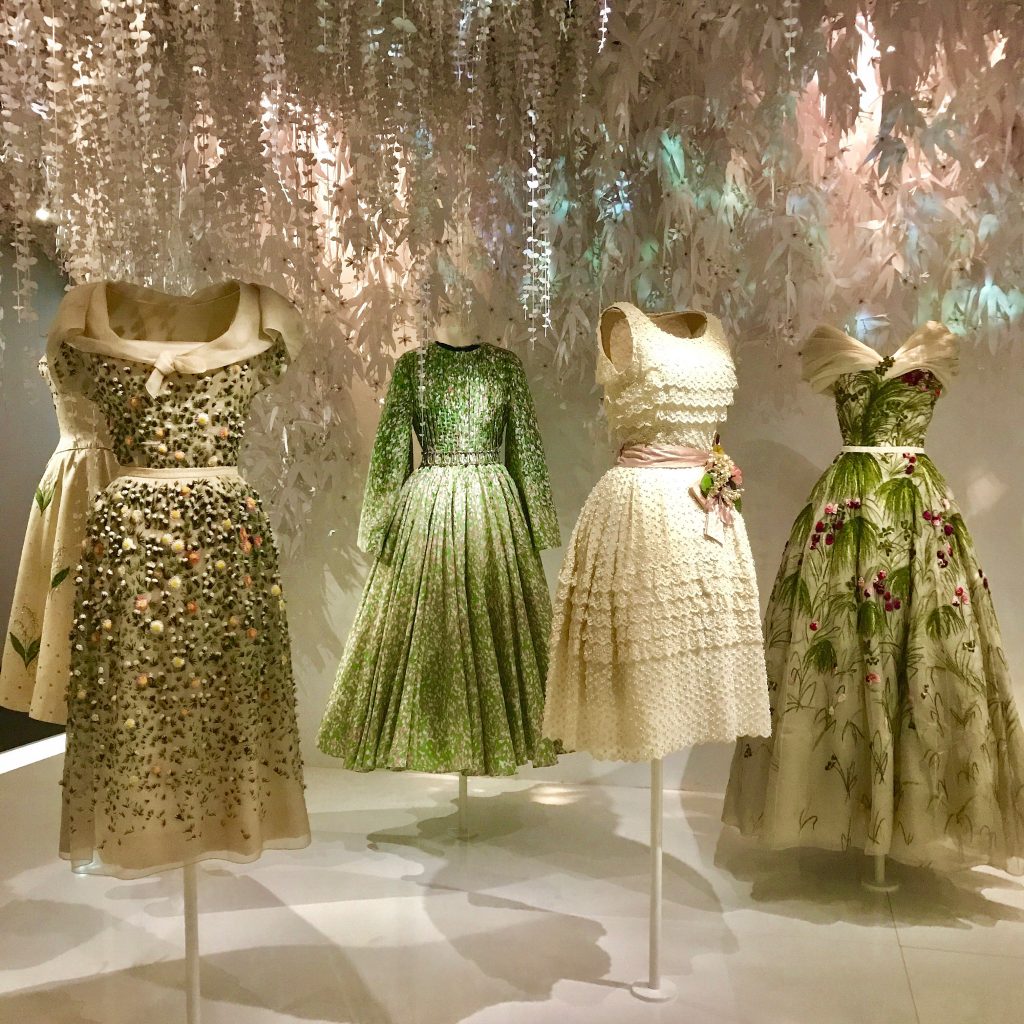
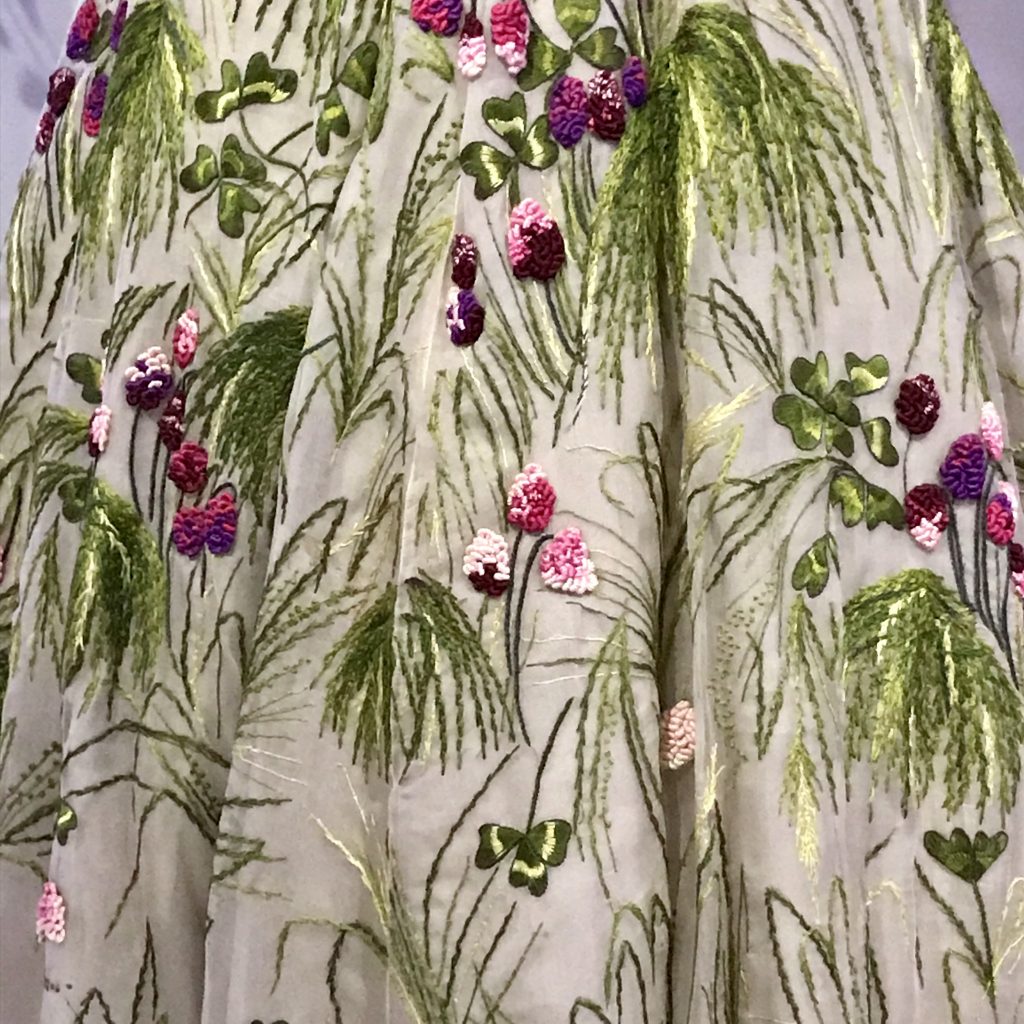
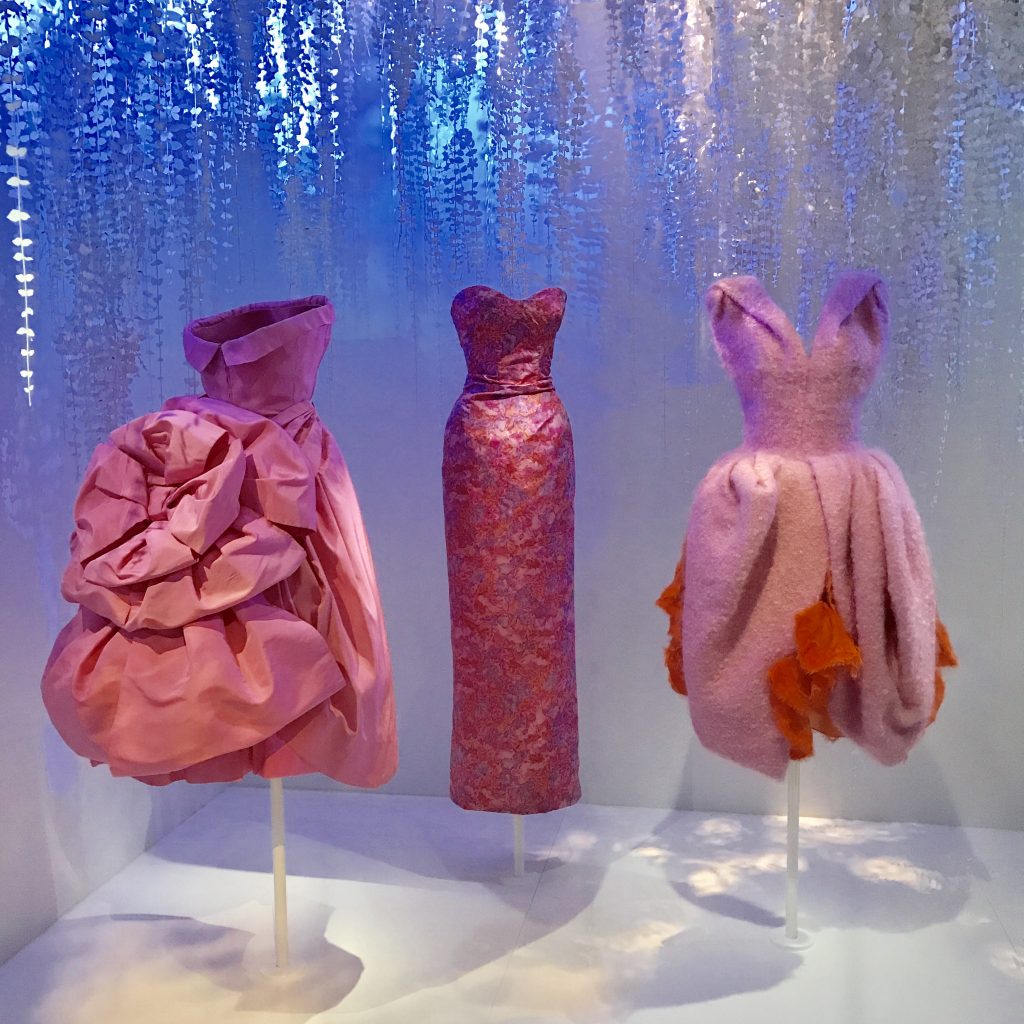
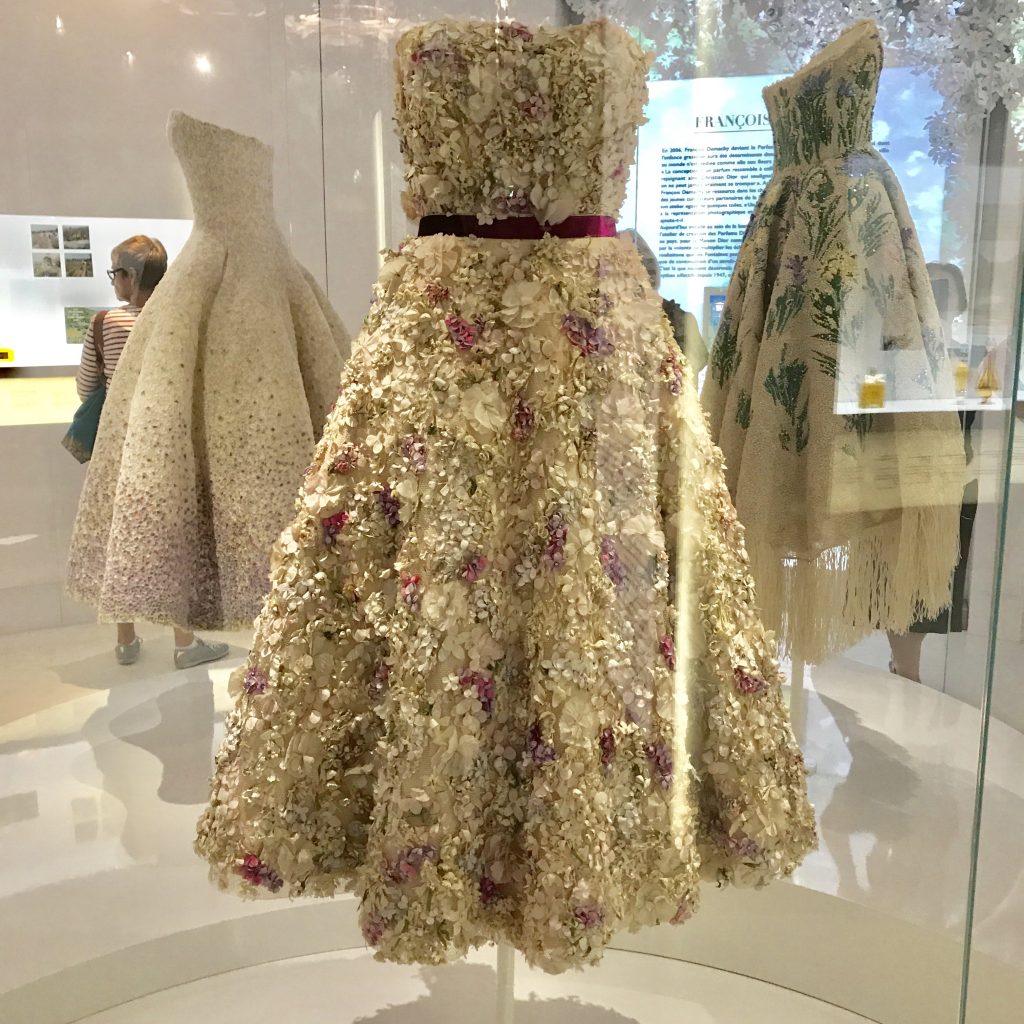
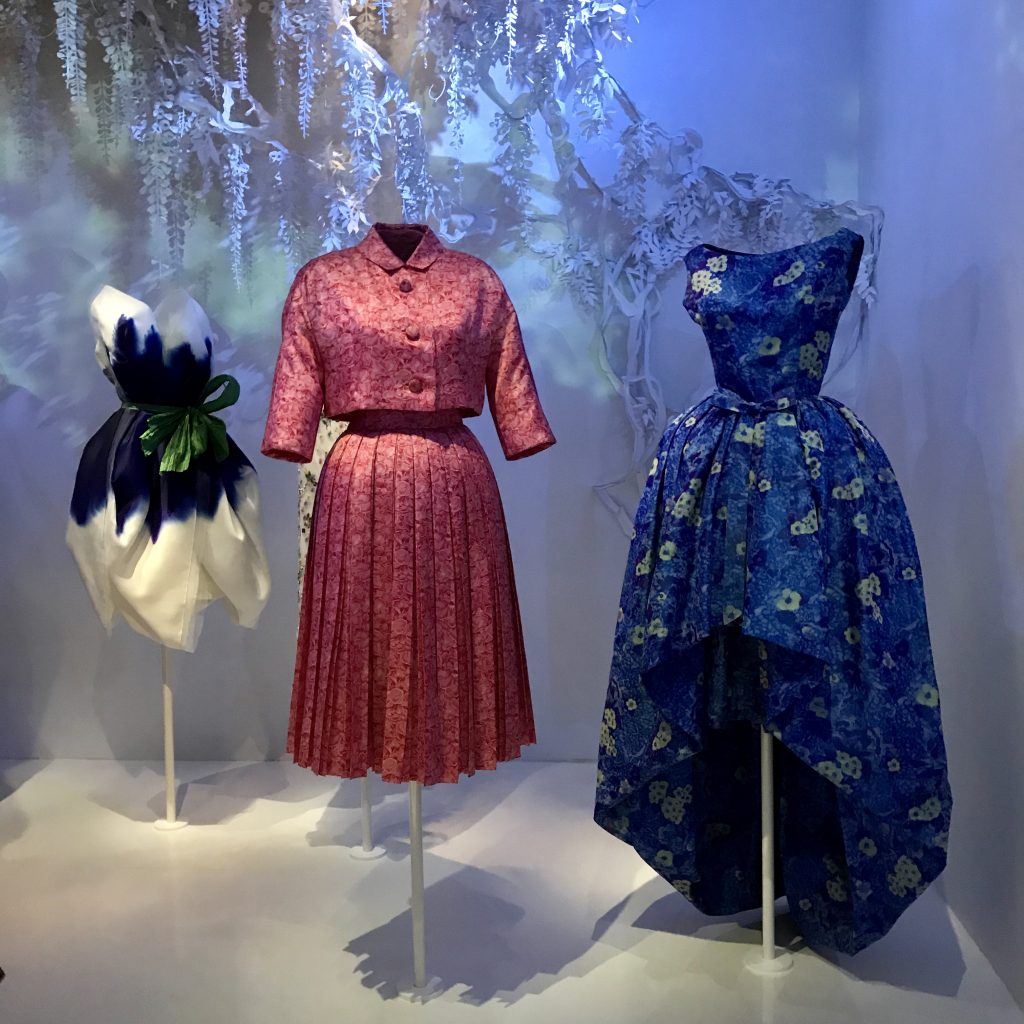
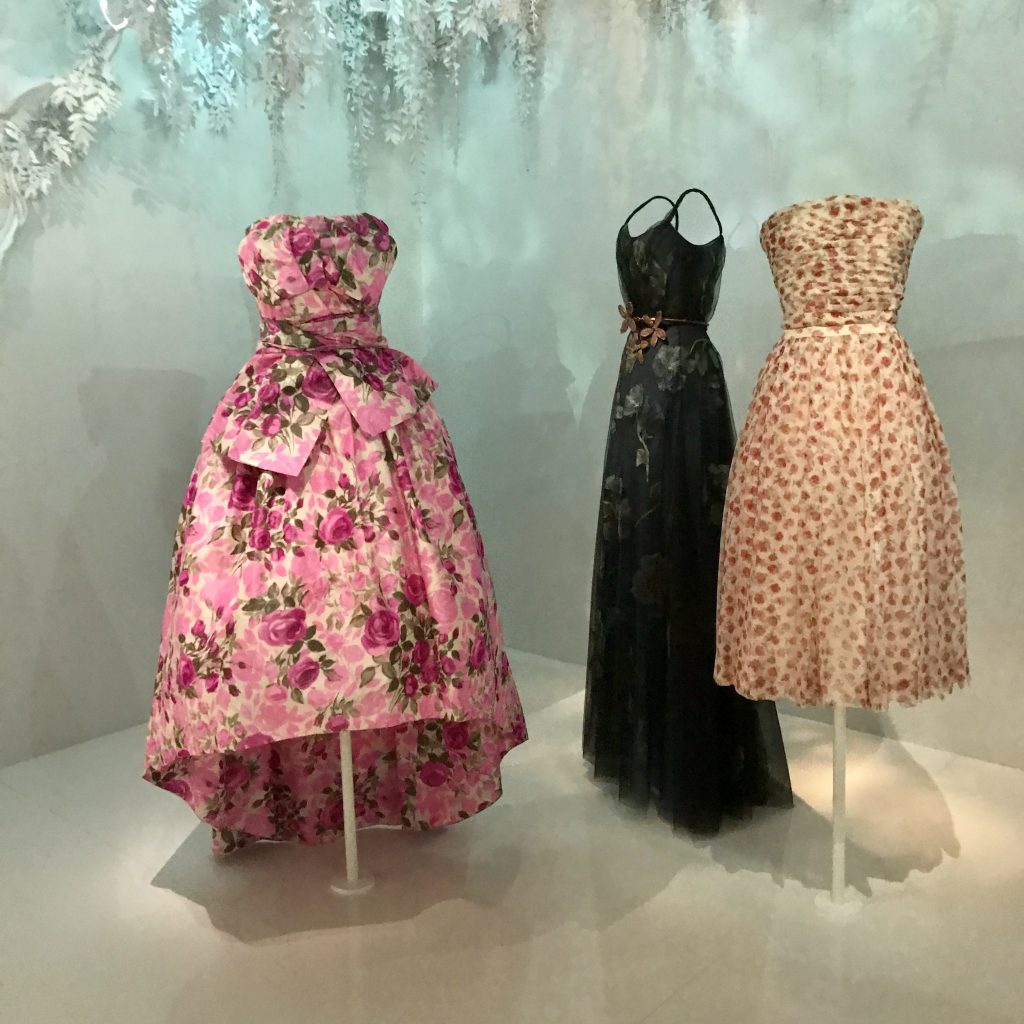
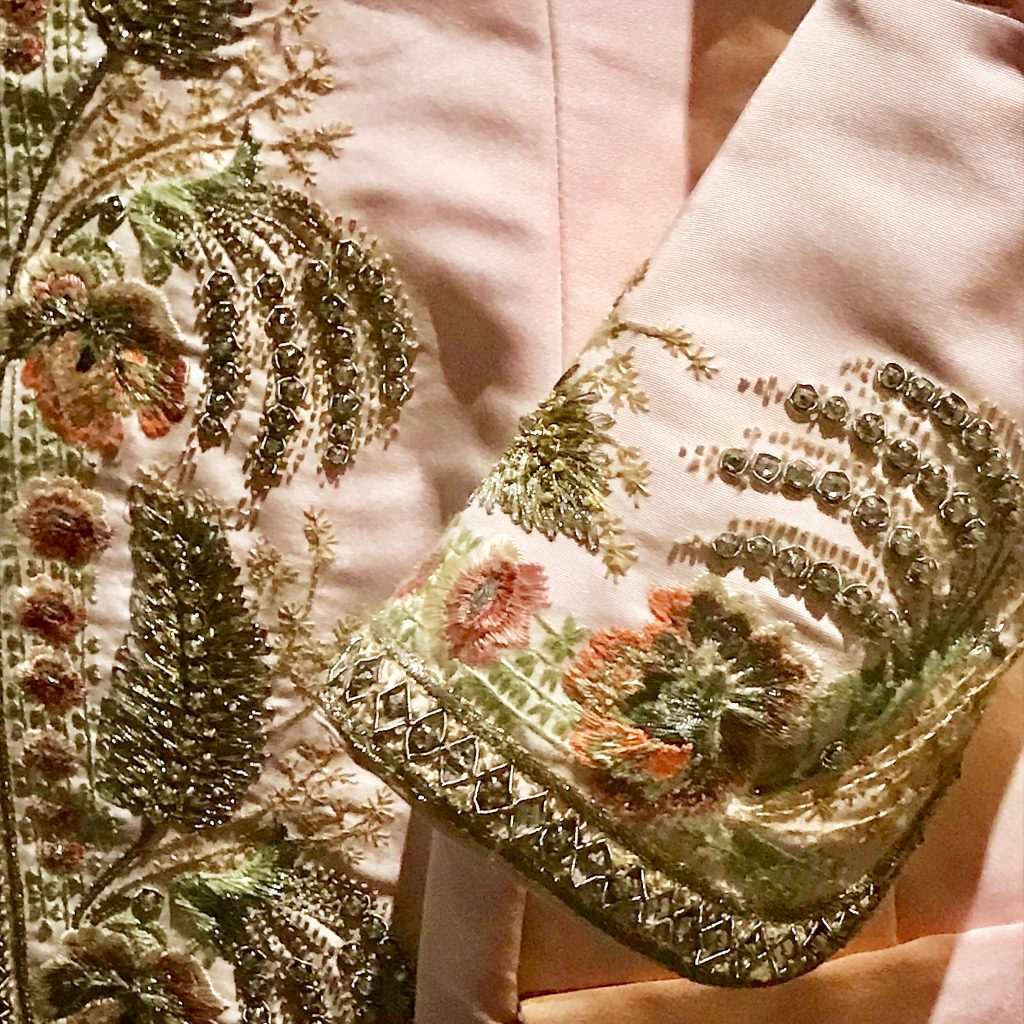
THE NEW LOOK
The iconic shape of the Bar suit that embodies the New Look opens the door to this voyage through time. The black-and-white ensemble demonstrates every aspect of the innovation Dior introduced with his new aesthetic, triggering a golden age of fashion. The suit has continued to haunt the imagination of the fashion world and many of its couturiers and designers ever since. But the enduring nature of the Dior spirit also stems from the different artistic directors who carried on the couturier’s work after his death in 1957.
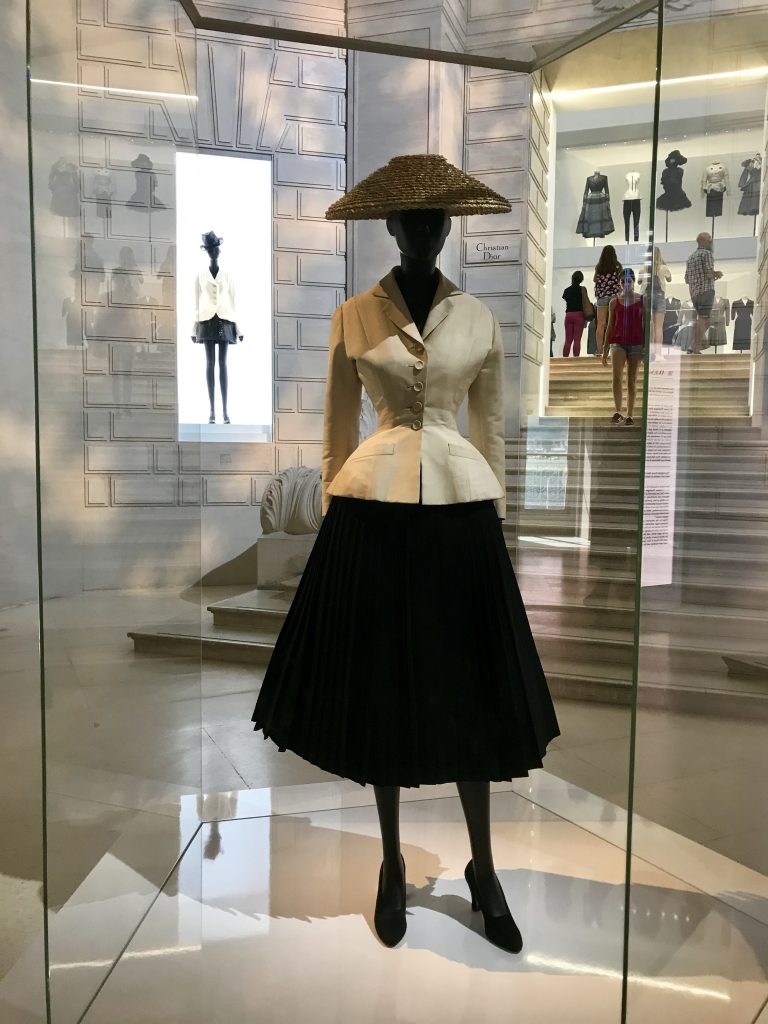
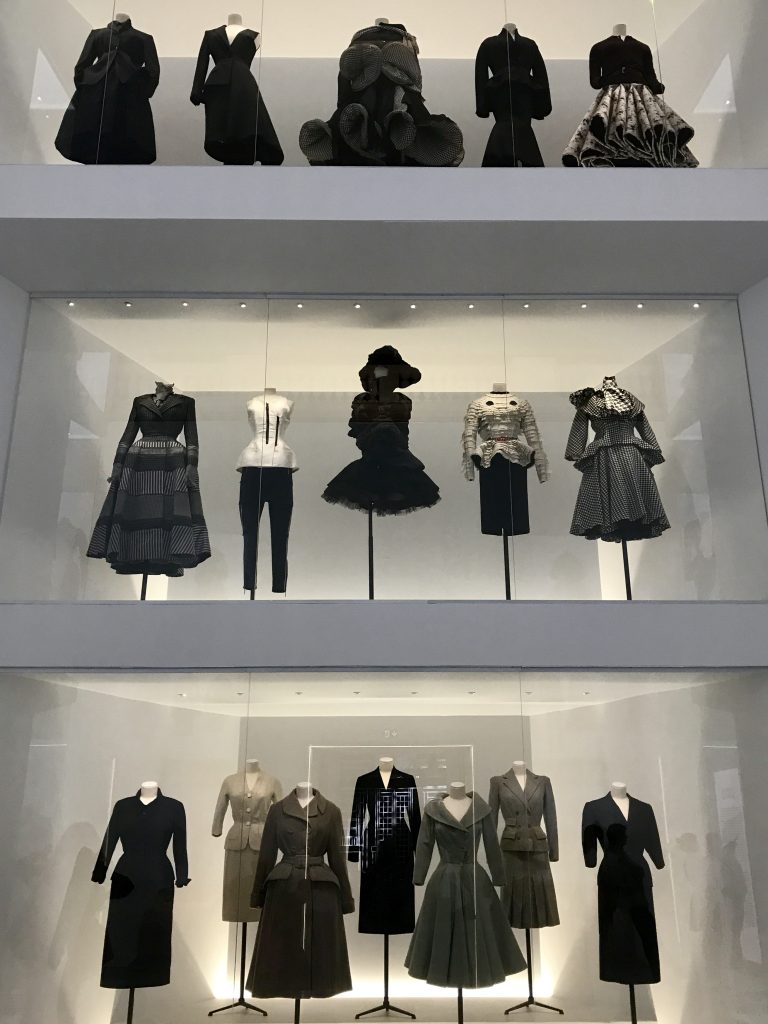
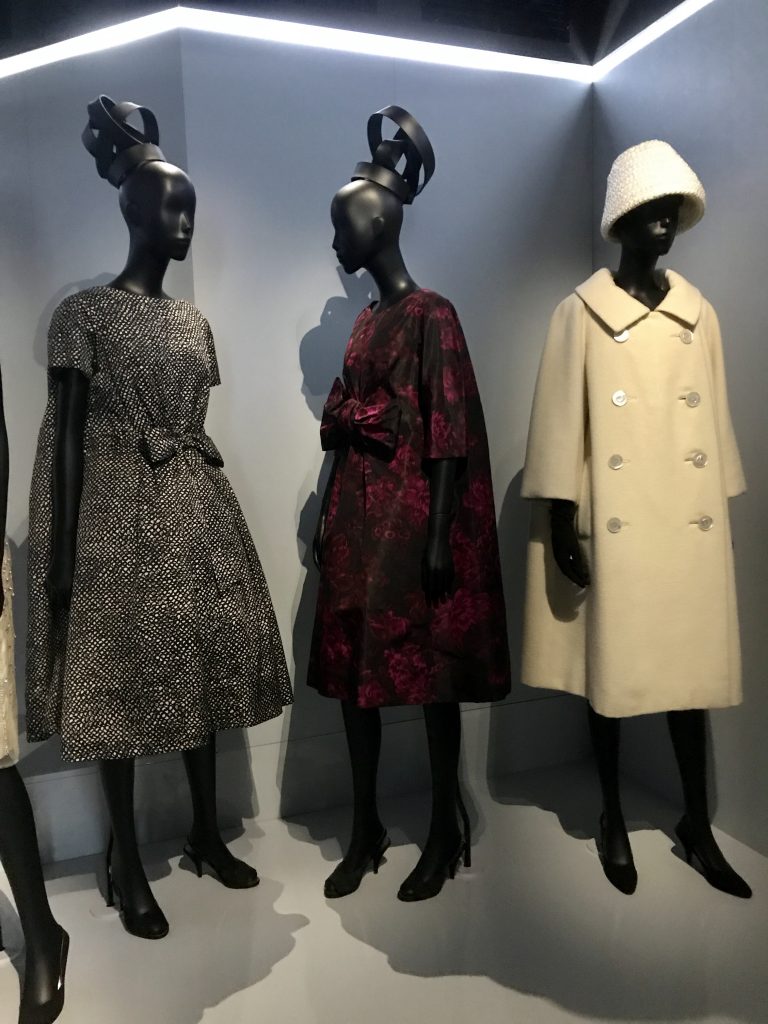
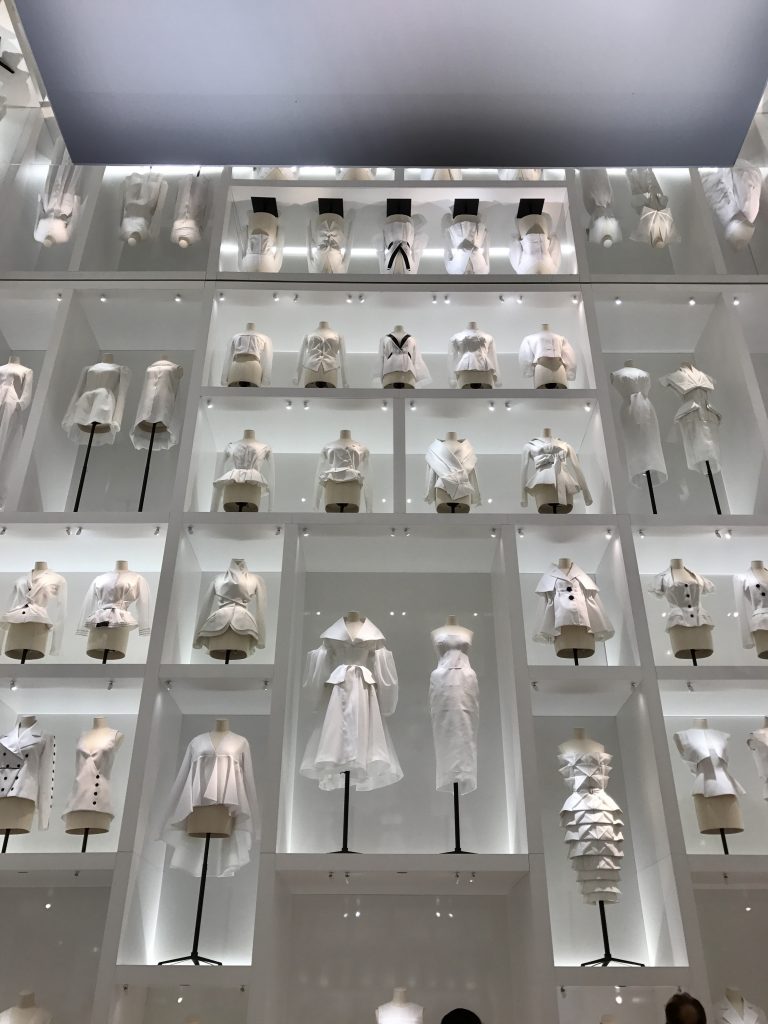
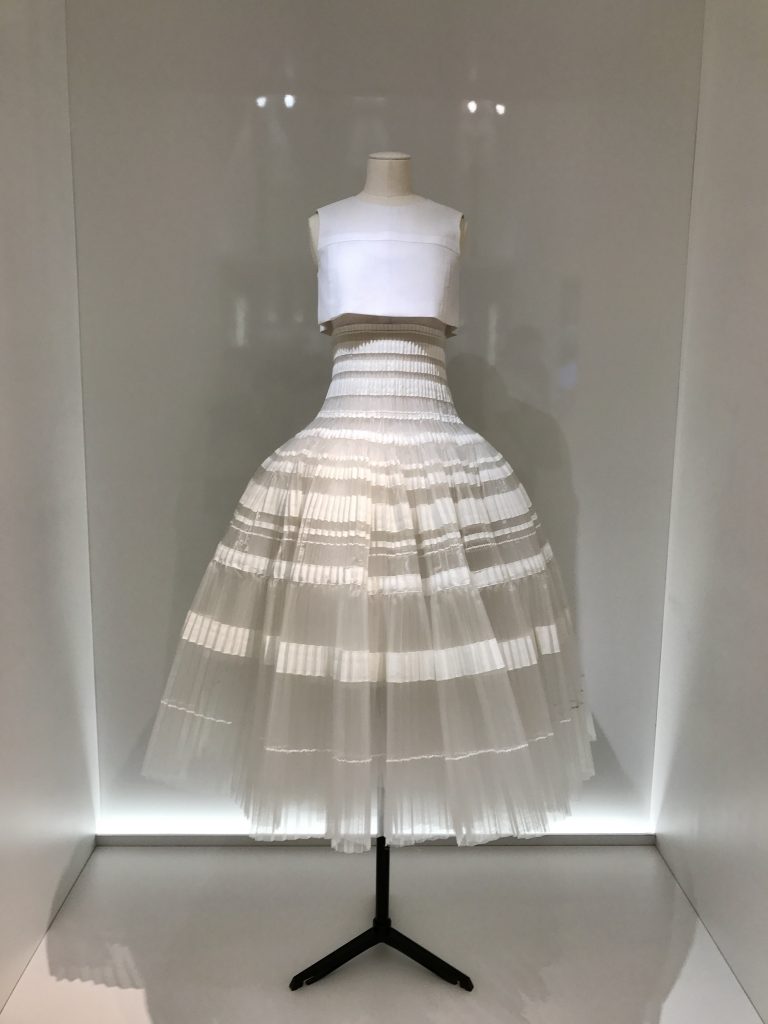
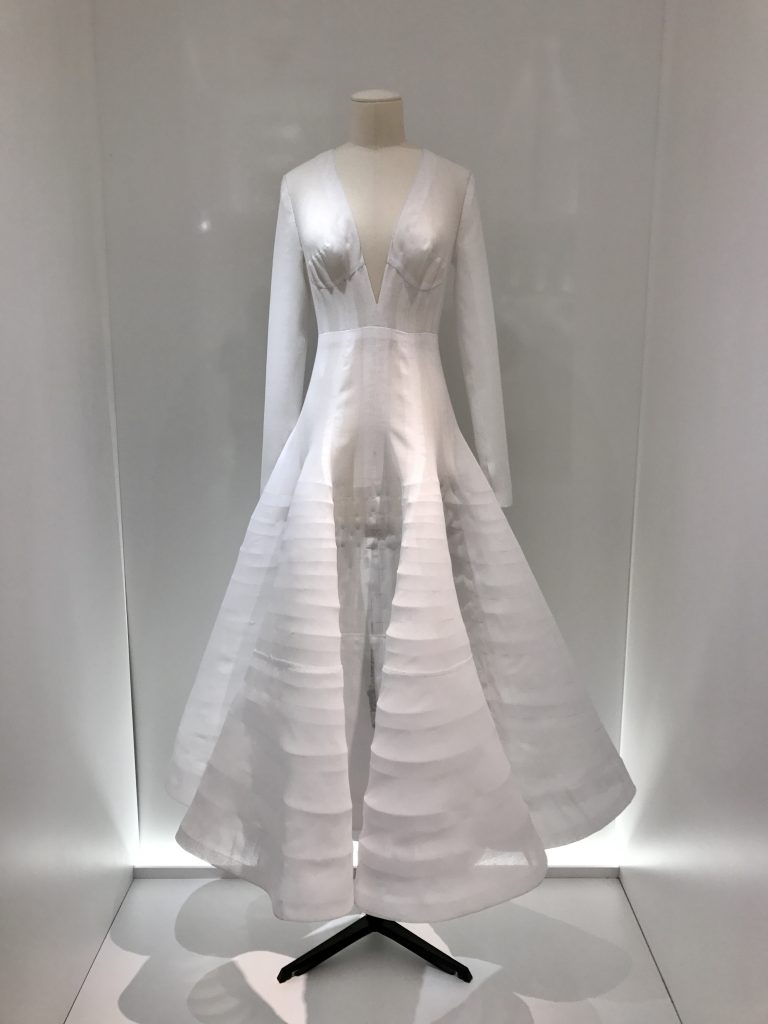
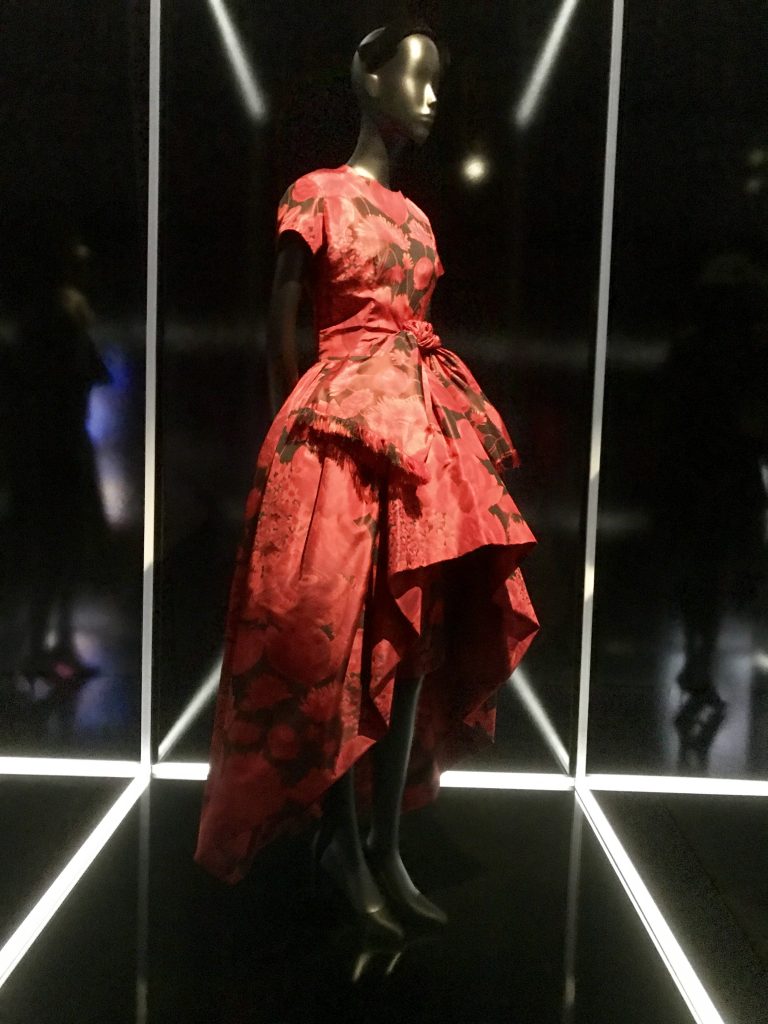
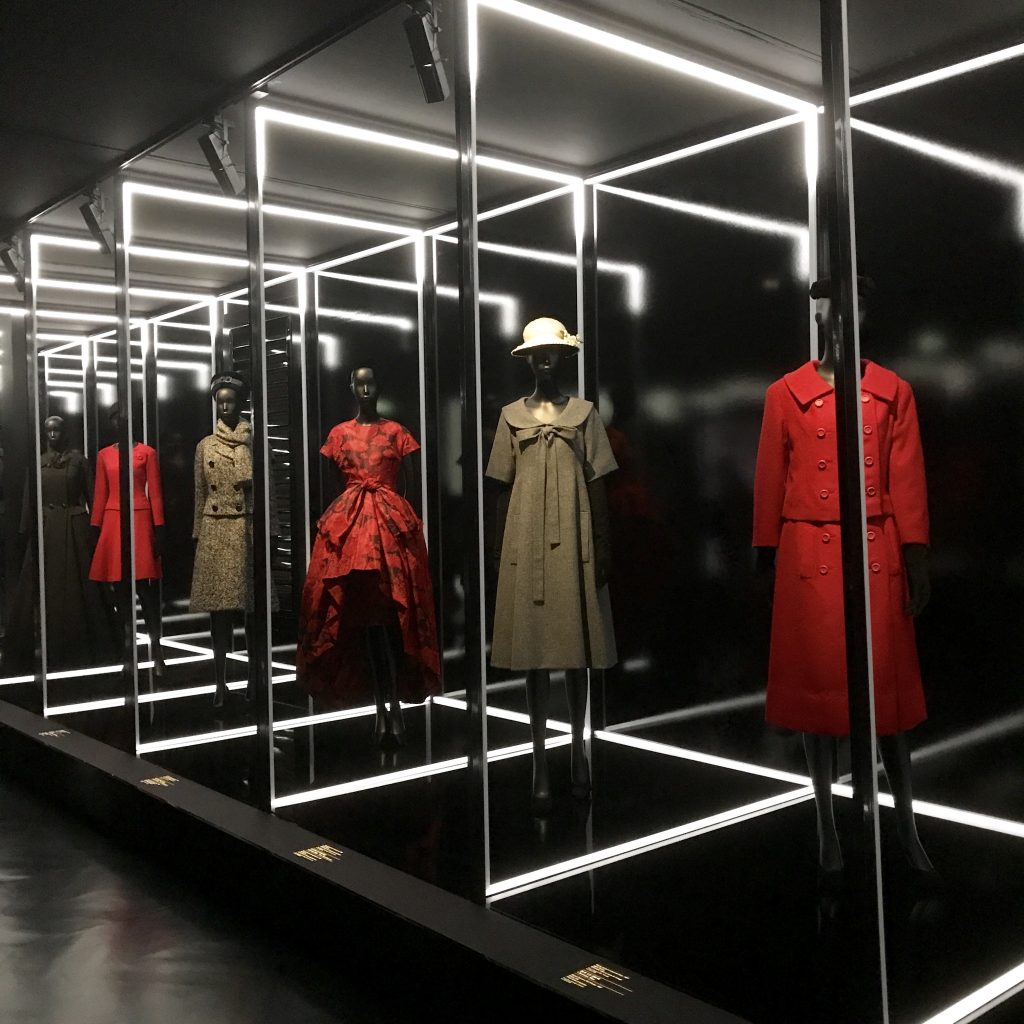
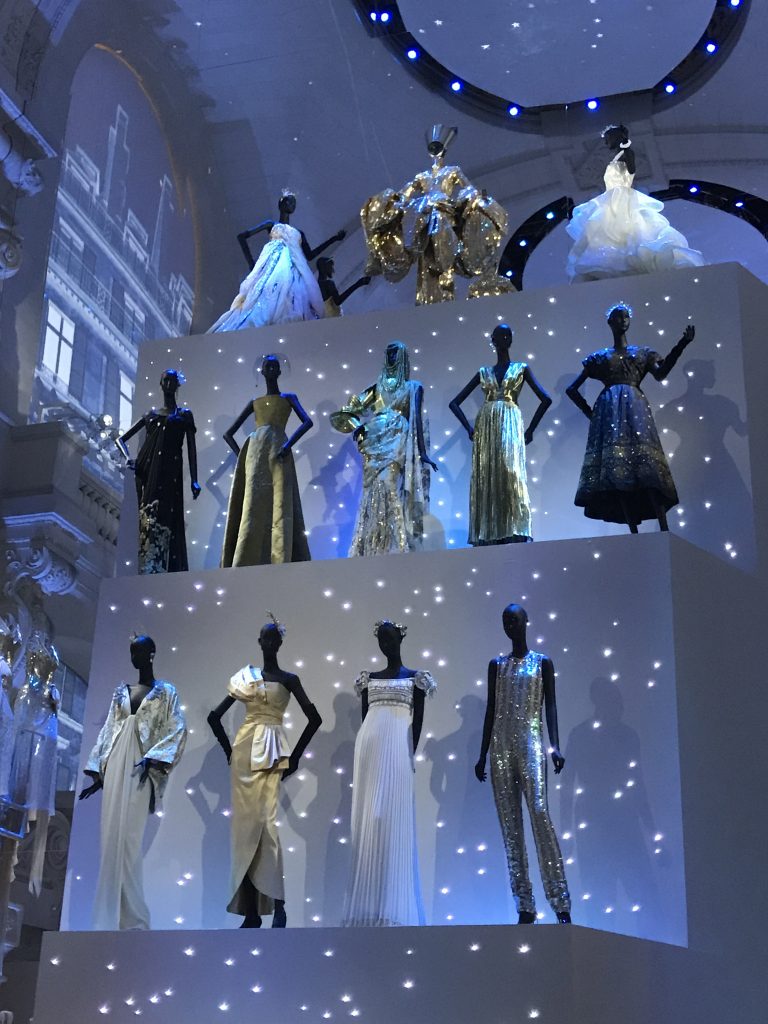
THE DIOR BALL
Graceful, bold and supremely elegant, balls played a part in the renaissance of society life after the war and revealed the extent of Christian Dior’s creativity. The couturier liked to venture beyond the confines of the haute couture world and design for costume balls, such as the “Entrance of Giants” outfits created with his friend Salvador Dalí for the Ball of the Century organized by Charles de Beistegui at the Palazzo Labia in 1951. There was nothing Dior loved more than a lavish ball, and he attended them dressed as characters who reflected his fertile imagination.
John Galliano shared his passion for costumes and taking on different roles: in July 2007, he used the Versailles Orangery as the setting for a catwalk show on the theme of the Artists ball to mark the House of Dior’s 60th anniversary. From Naomi Campbell and Helena Christensen to Linda Evangelista, all the top models took part, wearing gowns inspired by the works of Renoir, El Greco, and Michelangelo.
When she joined Dior as the new artistic director, Maria Grazia Chiuri understood the important role played by balls in the history of both the House and its founder. For her first show, she turned the Rodin museum gardens into a labyrinth inhabited by the head-turning swirl of her diaphanous dresses.
DIOR AROUND THE WORLD
Christian Dior could contemplate the great expanse of the sea from the window of his childhood bedroom, where he may well have dreamed of travelling to far-off places. England was the first country he visited in his youth. After a voyage of discovery to Russia in 1931, Christian Dior carried on exploring the world and travelled to the USA in 1948. That was the same year that Neiman Marcus presented him with the Fashion Award in Dallas. The couturier then set off on a triumphant tour of the American continent, cementing the resounding transatlantic success of his New Look.
The art and culture of the world’s continents provided Christian Dior and his successors with numerous sources of inspiration. John Galliano and Raf Simons were very interested in ornamental African art and traditional Maasai adornments. Marc Bohan and John Galliano offered a new take on Ancient Egypt.
Christian Dior paid homage to calligraphy and Chinese dress. John Galliano dedicated his entire Summer 2003 collection to encounters between the Far East and the West. Christian Dior, John Galliano, Raf Simons, and Maria Grazia Chiuri all reinterpreted an array of Japanese themes, from shibori, fukusas, kimonos, and obi knots to Hokusai’s paintings and flowering cherry trees.
The influence of modern and contemporary artists such as Jaskson Pollack, Agnes Martin and Sterling Ruby can also be seen in the dresses alongside the original works of art.
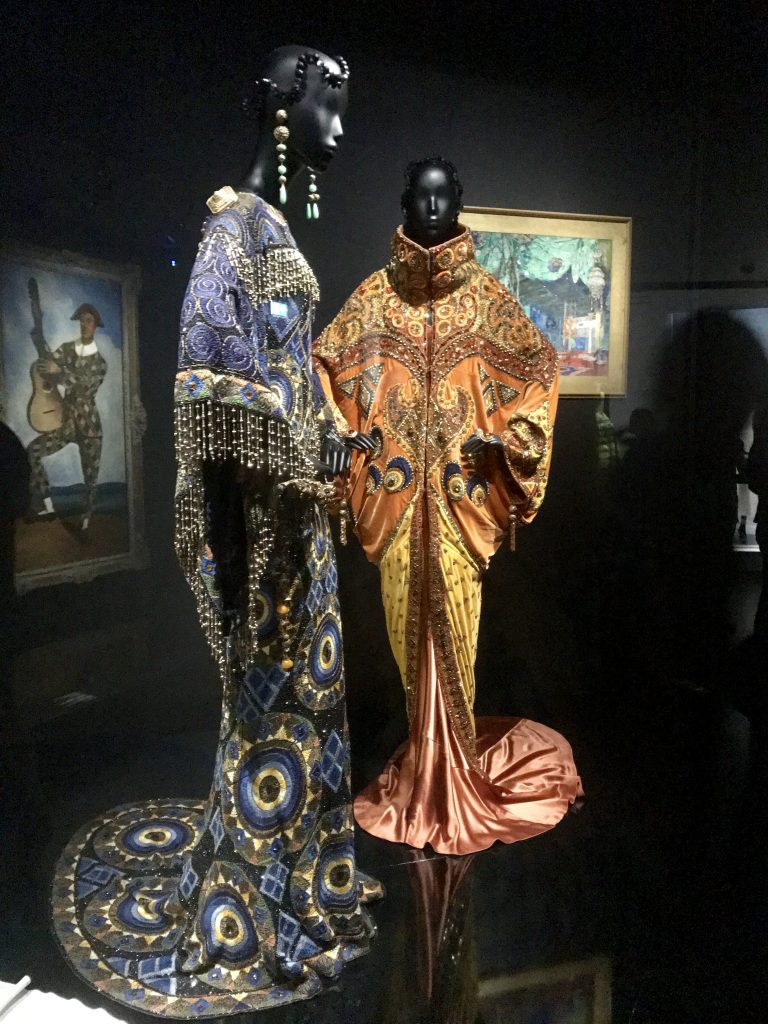
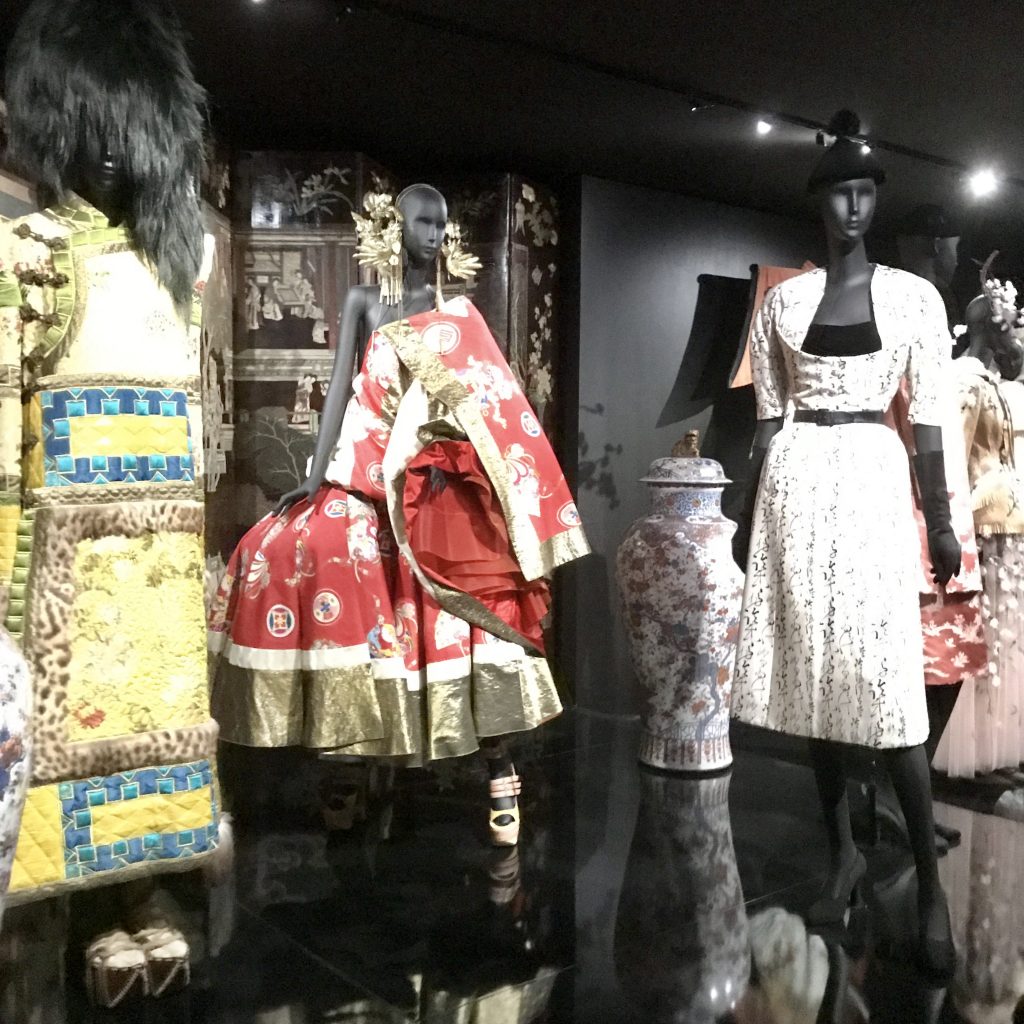
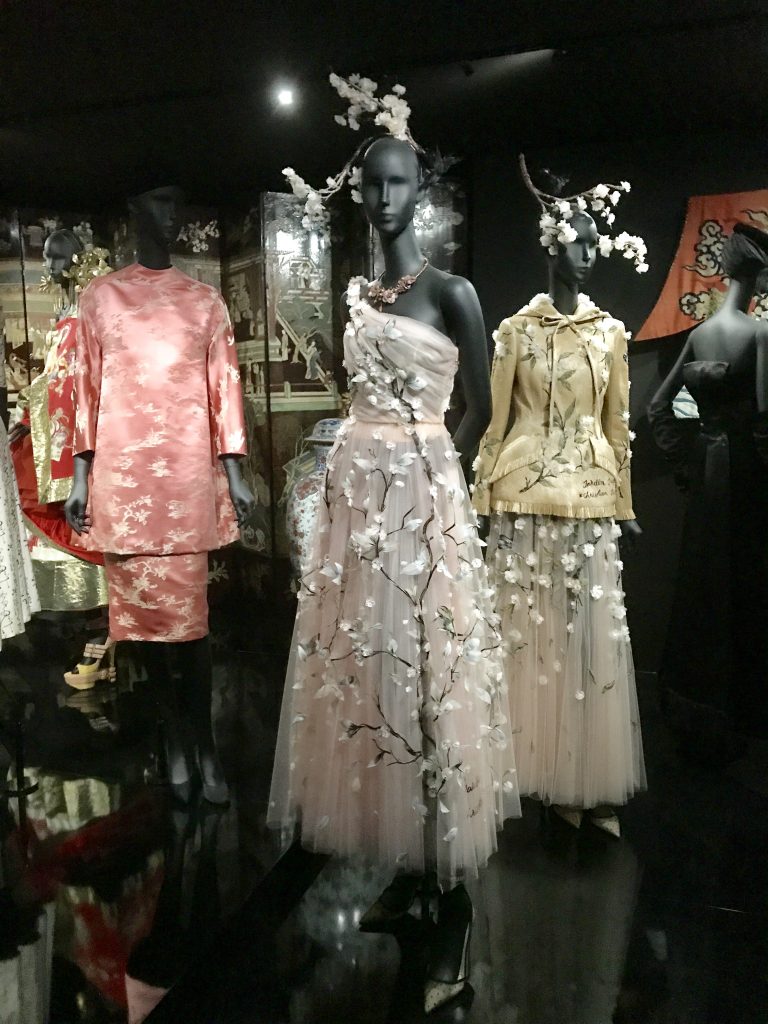
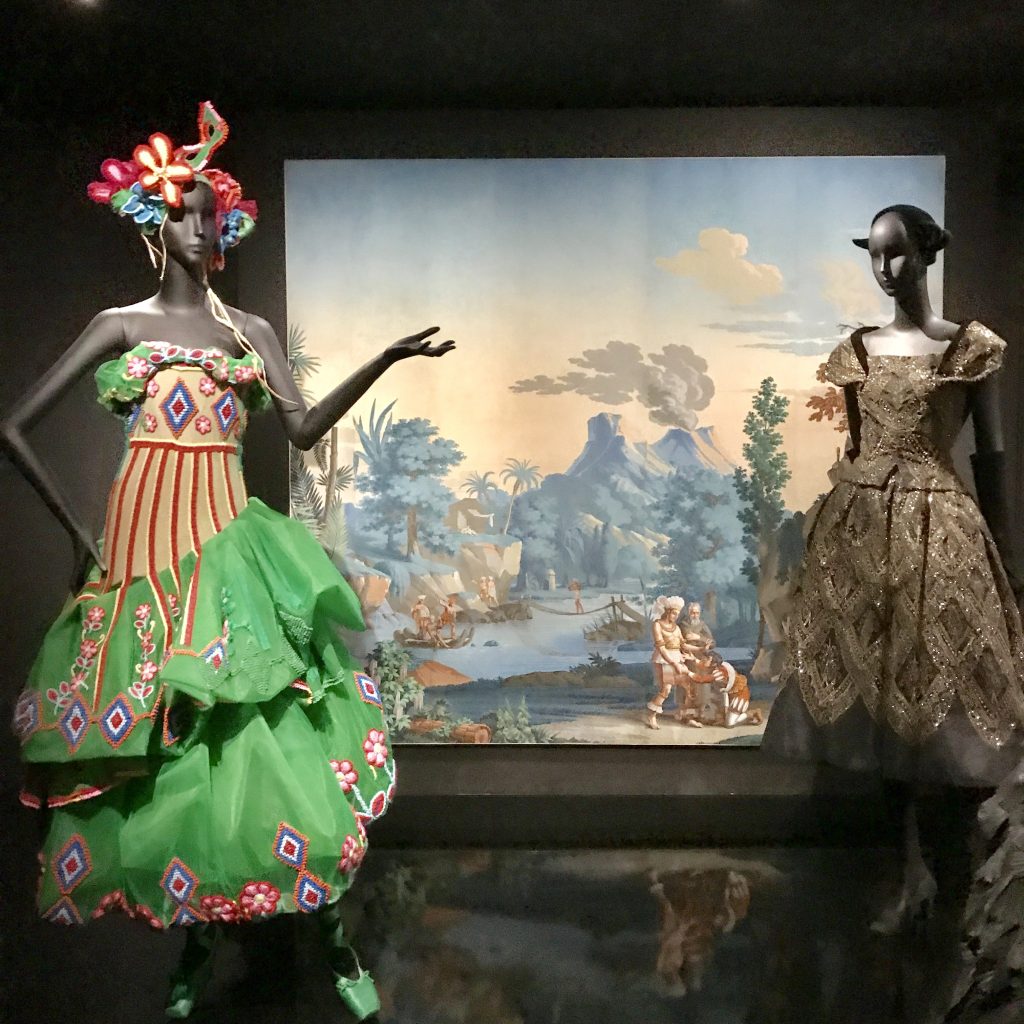
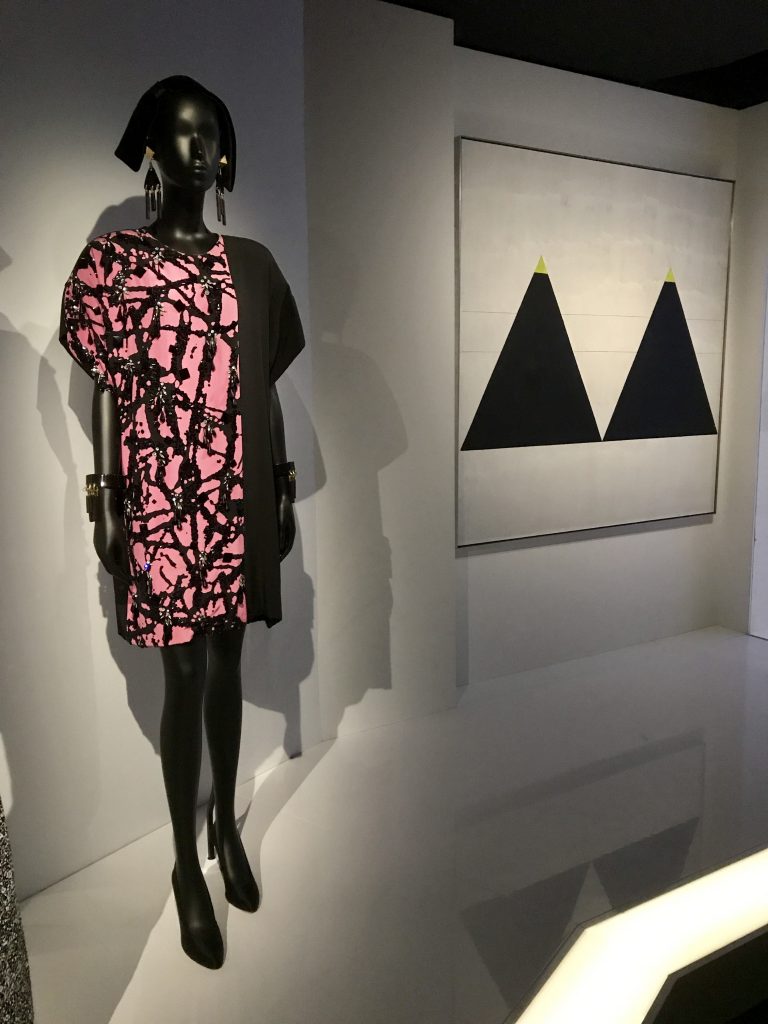
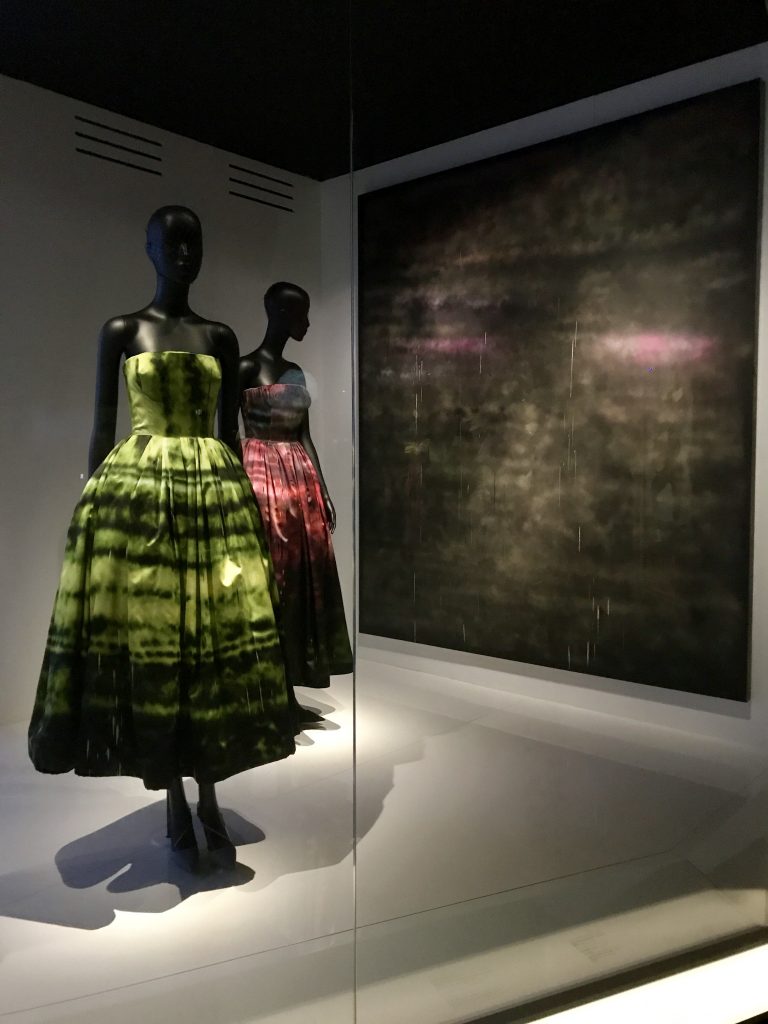
LOULOU AT MUSEÉ DES ARTS DECORATIFS
Be sure to stop at the incredible new restaurant LOULOU designed by Joseph Dirand. LOULOU has been conceived as an aesthete’s abode, a collector’s dining room decorated gradually with the time and and the spoils of many voyages… It is the perfect spot to linger overlooking the Tulieries and the Louvre and contemplate all of the beauty just experienced at the Dior show!
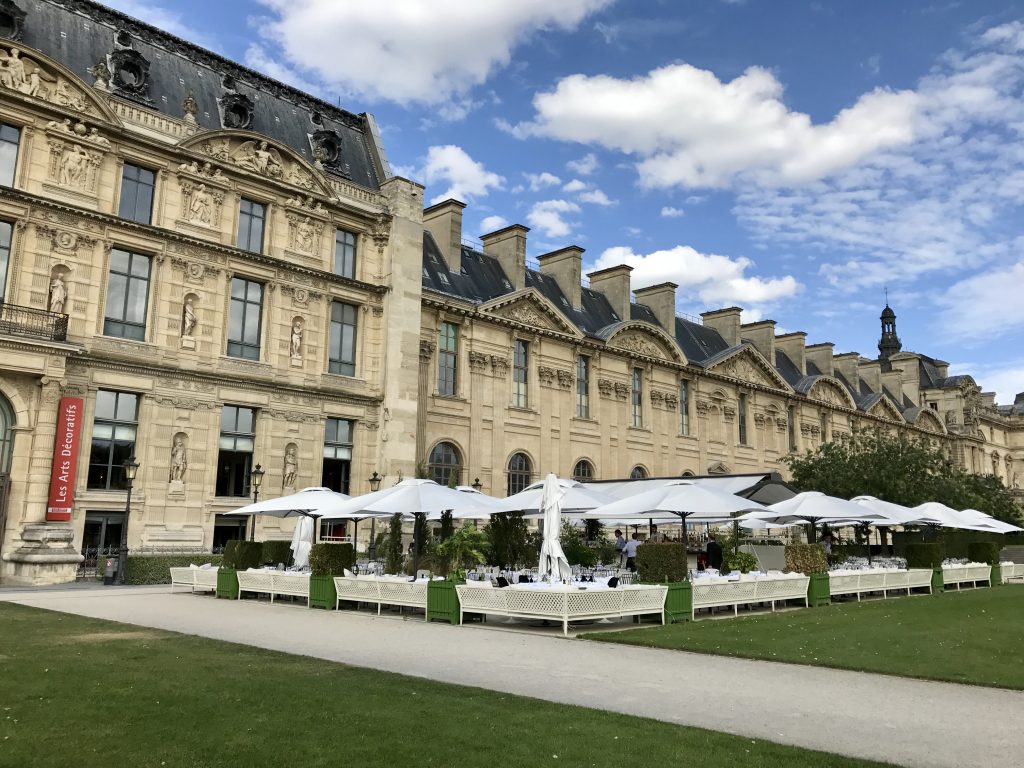
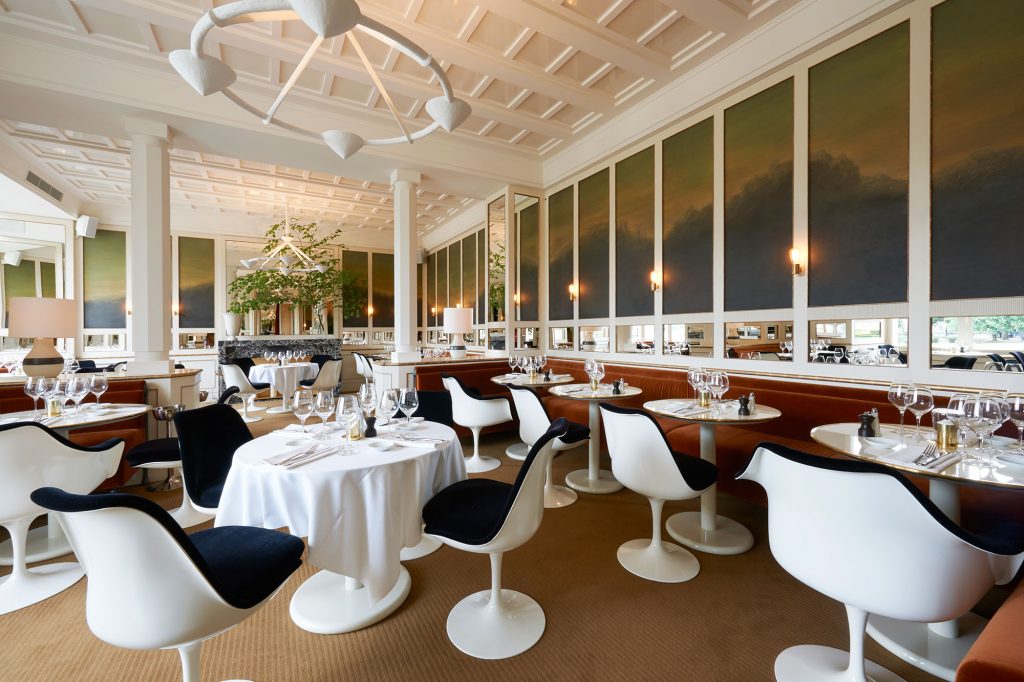
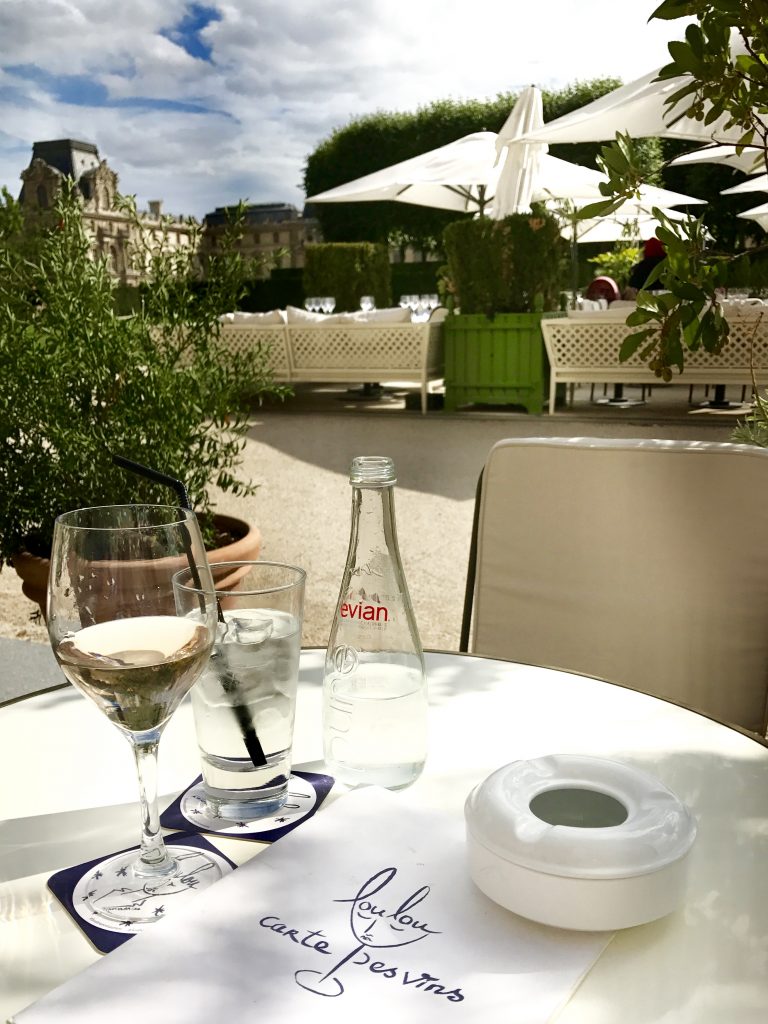
Click here to purchase the beautiful exhibition catalogue.
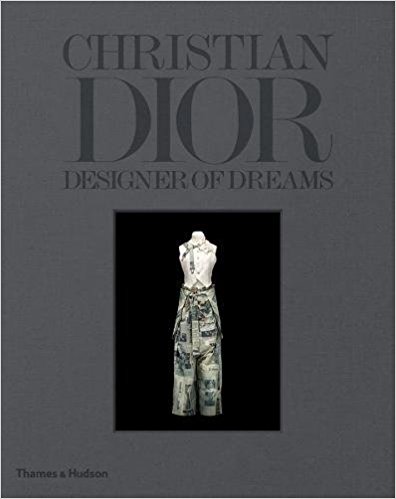
*All images by me unless otherwise noted. Text via Museé des Arts Decortifs.
For more design inspiration, please follow along on Instagram, Pinterest, Facebook, Twitter and subscribe to Bespoke Banter. Thanks for visiting!

